| Auto | Health | Holidays | Money | Society | Entertainment | Science | Education | Hobby | Home | Family | Sport | Technology | Food | Travel  About | Terms and Conditions | Contact & Advertising Enquiries  The ultimate guide to salon hygiene and infection controlWhat is salon hygiene? It's a crucial aspect of the beauty industry, directly impacting client safety and business reputation. This guide delves into the essentials of maintaining a clean and safe salon environment, so you'll not only meet industry requirements but also ensure a superior experience for your clients. Upholding standards: role of salon hygieneIn the U.S., salon hygiene is not just a matter of good practice; it's mandated by law. Strict regulations ensure cleanliness and safety in beauty salons, protecting the health of both clients and staff. These guidelines, enforced by organizations like Occupational Safety and Health Administration ( OSHA ), cover chemical handling, tool sterilization, and personal protective equipment. Following these protocols not only prevents health hazards like infections and chemical exposure but also maintains the integrity of the salon industry. By adhering to legal standards, salons demonstrate their commitment to excellence, fostering trust and professionalism in the beauty realm. So, let's delve into the essential hygiene practices that every salon should uphold! 5 general salon hygiene rulesIn the heart of every successful salon lies a foundation of rigorous hygiene practices. This section outlines the key salon hygiene rules every beauty establishment must follow to ensure a safe, clean, and welcoming environment for clients and staff alike. Spotless standardsAt the core of salon hygiene is an unwavering commitment to cleanliness. Every surface, from chairs and mirrors to countertops, must be regularly sanitized. Implementing a daily cleaning schedule ensures that your salon not only looks spotless but also minimizes the risk of cross-contamination. - Use EPA-registered disinfectants to clean surfaces and equipment.
- Pay special attention to high-touch areas like door handles, light switches, and payment terminals.
Regular deep cleaning of the salon, including floors and restrooms, further reinforces this commitment, creating an environment that is not just aesthetically pleasing but also hygienically sound. The future of salon managementDive into the world of automated orders and seamless warehouse accounting. Embrace the future today!  Hands firstHand hygiene is a non-negotiable aspect of salon safety. Both staff and clients should wash their hands thoroughly with soap and water before and after each service. This simple act is one of the most effective ways to prevent the spread of germs. Encourage the use of hand sanitizers, especially in areas where handwashing facilities are not readily available. Nail technicians and hair stylists should make it a routine to sanitize their hands before and after each client interaction, ensuring that the risk of transferring pathogens is significantly reduced. Proper sterilization of tools and equipment is a critical aspect of salon hygiene. All reusable tools, including scissors, combs, brushes, and nail instruments, should be cleaned and sterilized between clients. Autoclaves or UV sterilizers are effective for this purpose. For items that cannot withstand high temperatures, use an appropriate disinfectant solution. Make sure to follow the manufacturer's instructions for both the tools and the sterilizers to ensure effective sterilization. Вetailed look at the sterilization process and the necessary equipmentAutoclaves . An autoclave is a device that uses steam under pressure to sterilize equipment. It is the gold standard for sterilization in nail salons. The autoclave heats tools to a high temperature (usually between 250 F or 121°C and 276 F or 134°C ) for a specific period, effectively killing all microorganisms. Metal tools like nail clippers, cuticle nippers, and metal pushers are ideal candidates for autoclave sterilization. - Ultraviolet (UV) sterilizers. UV sterilizers use ultraviolet light to disinfect tools. While not as effective as autoclaves, they are suitable for tools that cannot withstand high temperatures. UV light disrupts the DNA of bacteria and viruses, rendering them harmless.
UV sterilizers are useful for sterilizing non-metal tools and equipment like plastic cuticle pushers and some types of files. - Chemical sterilants and disinfectants. These are liquid solutions used to sterilize tools that cannot be subjected to high temperatures. Common chemical sterilants include glutaraldehyde, formaldehyde, and hydrogen peroxide.
Submerge the tools completely in the solution for the time specified by the manufacturer. This method is suitable for items like glass files and certain pedicure tools. - Dry heat sterilizers . Dry heat sterilizers use hot air to sterilize tools and are an alternative to autoclaves, especially for tools that might rust. The sterilizer uses high heat (usually around 320 F or 160°C) for a longer period than autoclaves.
Dry heat sterilizers suitable for metal tools and instruments that can withstand high temperatures but are prone to rust. Regular maintenance of equipment, including replacing any worn-out or damaged tools, is essential to maintain the highest standards of hygiene. Single-use safetyIncorporating disposable items into salon services can significantly enhance salon hygiene practices. Items like gloves, nail files, and buffers should be single-use and disposed of immediately after each client. This practice not only prevents cross-contamination but also provides clients with the assurance that their safety is being prioritized. Ensure that disposable items are of good quality and are used in a manner that complements your salon’s hygiene protocols. Safe disposal of these items should also be practiced, with clearly marked bins for hazardous and non-hazardous waste Chemical careSalons use a variety of chemicals, and their safe storage and handling are vital for maintaining a safe environment or pose a risk to health. Such chemicals are also known as hazardous materials. Hazardous materials are substances or ingredients used in products that can pose a risk to health or the environment. These materials could include toxic chemicals, irritants, allergens, or environmentally harmful compounds. The usage of such materials is often regulated to ensure consumer safety. - Store chemicals in a well-ventilated area, away from direct sunlight and heat sources. Ensure that all containers are clearly labeled and securely closed when not in use.
- Staff should be trained in the safe handling of chemicals, including the use of personal protective equipment like gloves and masks.
- Implement a spill response plan and have material safety data sheets (MSDS) readily available for all products.
- Follow utilization recommendations.
A Safety Data Sheet (SDS), or Material Safety Data Sheet (MSDS), is a standardized document that contains crucial occupational safety and health information. The International Hazard Communication Standard (HCS) mandates it. By adhering to these 5 general salon hygiene rules, you can foster in your space an environment that is not only aesthetically appealing but also health-conscious, ensuring the well-being of both clients and staff. Hygiene in nail salonsHygiene in nail salons have unique challenges and demands. Here are specific, actionable tips tailored for the distinctive environment of a nail salon: - Avoid cross-contamination with pedicure basins . Ensure that pedicure basins are thoroughly cleaned and disinfected after each use. Implement a protocol that includes draining, cleaning with soap and water, and then using an EPA-registered disinfectant. This process is critical to prevent fungal and bacterial infections.
- Manage dust and debris . Nail filing and buffing generate a significant amount of dust. Use dust extractors or at least ensure that your salon is equipped with HEPA filters to minimize dust in the air. Regularly clean the salon to remove nail dust and debris, which can harbor harmful pathogens.
- Implement a ‘no blood, no service’ policy . If a client has an open wound or any bleeding around the nails, postpone the service until it has healed. Open wounds are susceptible to infection and can also be a source of bloodborne pathogens.
- Handle nail products safely. Some nail products contain strong chemicals. Store all products in a cool, dry, and well-ventilated area. Ensure proper labeling and keep Safety Data Sheets (SDS) accessible for reference in case of allergic reactions or chemical spills.
- Provide regular inspections of foot spas and equipment . Set a routine for inspecting foot spas and other equipment for any signs of wear and tear. Cracks or damages can harbor bacteria and become a source of contamination.
By focusing on these specific aspects, nail salons can enhance their hygiene practices, going beyond general cleanliness to address the unique requirements of nail care and ensuring a safe, hygienic experience for every client. Order products and manage inventory effortlesslyDiscover the simplicity and efficiency of managing your salon's inventory with Suplery. Sign up for free and get: - Access to top brands. Suplery connects you with popular beauty brands, offering competitive pricing. This means your salon can provide premium products without hurting your profit margins.
- Insightful analytics. Gain valuable insights into sales trends and inventory needs, enabling informed decisions about product selection and stock levels.
- Automated inventory management. Suplery automates the tracking and reordering process, saving you time and reducing manual errors.
- Enhanced profitability. By optimizing inventory management, Suplery helps improve your salon's overall efficiency and profitability.
With Suplery, inventory management becomes a streamlined, hassle-free process, allowing you to focus more on client satisfaction and less on backend operations. Put the ordering process in orderSave time and avoid out-of-stock issues with Suplery's intuitive inventory alerts and easy automatic ordering tool Final thoughtsIn conclusion, maintaining impeccable salon hygiene and managing inventory effectively are key pillars in building a successful beauty business. By implementing the guidelines, you can ensure a safe, efficient, and client-friendly salon environment. Remember, a commitment to cleanliness and smart inventory management not only enhances client trust but also drives your business toward greater heights of success. Stay clean, stay organized, and thrive! Frequently asked questionsWhat is salon hygiene? Salon hygiene refers to the practices and measures taken to ensure cleanliness and sanitation in beauty salons. This includes regular cleaning, sterilization of tools, and personal hygiene of staff, to prevent the spread of infections and maintain a safe environment for clients and employees. Why is personal hygiene important in a salon? Personal hygiene is crucial in a salon as it directly impacts the health and safety of both clients and staff. Good personal hygiene practices, such as regular hand washing and wearing clean uniforms, help prevent the spread of germs and maintain a professional and trustworthy atmosphere in the salon. What is the most important hygiene in a beauty salon? The most important aspect of hygiene in a beauty salon is the sterilization and disinfection of tools and equipment. This is vital for preventing cross-contamination and the spread of infections between clients. Ensuring that all tools are properly cleaned and sterilized after each use is fundamental to maintaining high hygiene standards in any salon. Master business fundamentals step-by-stepSubscribe now for actionable how-to guides, foolproof business strategies, and practical advice. Transform your "how-to" questions into successful business actions today! Ooops! Something went wrong, please try again Done! You are subscribed to the Suplery newsletter ✓ Unsubscribe anytime. Your data is stored for business-to-business communication purposes. See our privacy policy . Last updated on Dec 18, 2023 “What Changed” in this article? Everything. It's packed with the latest findings, the ripest data, and a fresh analysis you won't find anywhere else. A subject-matter expert wrote the content, and reliable, official sources support it. Recent research has been incorporated to maintain relevancy and accuracy. Key sources and research references: osha Don't forget to share this postFrom words to action. Start working with Suplery and explore all the tools and services you need to expand your business 24/7 Support Secure payments Designed by industry’s experts JavaScript seems to be disabled in your browser. For the best experience on our site, be sure to turn on Javascript in your browser. - Compare ( )
- Knowledge Base
- Create an Account
 Hygiene in Beauty Salons: Essential Guidance Every business has a duty of care to keep their premises clean, tidy, safe, and hygienic for staff, customers, and anyone else involved with operations. But some work environments are naturally more hazardous than others. The beauty industry is one that presents a higher risk to health and safety than others. Everyday operations in a salon involve blades and needles, corrosive chemicals, heat and even clinical waste which is far more risks than can be found in the average office space. Precautions must be carefully measured against these risks, not only for the safety of those working in and visiting the salon, but also to maintain licenses and stay on the right side of a number of health and safety laws. In this article, we’ll go over all the essential aspects of salon hygiene . Beauty Salon Hygiene and the LawWhat is salon hygiene exactly? The meaning is different for every establishment. salon hygiene solutions need to meet the exact requirements of the business which is why the Health and Safety Executive precurses so much guidance by advising that a risk assessment will need to be carried out by the business owner before establishing protocols and rules. However, there are some pieces of legislation that all beauty salons must adhere to. beauty salon hygiene standards are built on a foundation of several fundamental pieces of legislation. 1. Health and Safety at Work Act 1974 and Health and Safety (First Aid) Regulations (1981)These apply to all businesses in the UK and require employers or self-employed people to take reasonable steps to keep their staff and customers safe from harm when on the premises or interacting with the business and to provide access to first aid. To comply, employers must provide access to a workplace first aid kit and appoint a ‘competent employee’, a nominated person whose responsibility it is to ensure the business is compliant with health and safety laws at all times. A workplace first aid kit should be British Standard certified to prove that its contents meet standards of quality deemed necessary for providing first aid in an emergency. The Steroplast Workplace First Aid Kit is fully certified.  PPE to Protect Against Hazardous Chemicals Procedures should also be put in place to minimise the use of hazardous chemicals to only when absolutely necessary, and all staff should be aware of how to properly store and dispose of them. 4. Reporting of Injuries, Diseases and Dangerous Occurrences Regulations 1995 (RIDDOR)All accidents, injuries, diseases and dangerous occurrences that happen in the workplace or as a result of the workplace must be reported to RIDDOR by law. The HSE will assess the incidents and provide guidance on how to deal with a mitigate them in the future. If regulations are found not to have been met a business could face prosecution. An example of a situation that needs to be reported to RIDDOR could be a sprained ankle as a result of spilling on a freshly cleaned floor, or the onset of dermatitis on a hair stylist’s hands. 5. Environmental Protection Act 1990This act is in place to provide guidance and rules that protect and preserve the environment. Beauty salons need to manage their waste disposal operations responsibly to ensure they aren’t causing harm to people, animals and the environment. Salons should arrange a collection of hazardous waste with a licensed specialist disposal company and retain record of their last two years of collections at all times. General waste streams should be segregated from other types of waste which could include: - Sharp tools such as used needles or blades
- Body fluids such as blood
- Waste contaminated with body fluids
- Hazardous synthetic chemicals
Clinical waste should be disposed of into a yellow biohazard bag , with sharp objects disposed of into a sharps bin . Any biohazard spills such as bleeding from an accident must be dealt with in the proper way. Using a biohazard spill kit is the best way to do this. Read our guide on how to use a biohazard spill kit . 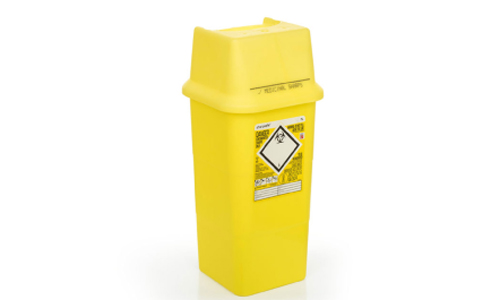 Equipment for Disposing of Clinical Waste in a Salon Find out about which colour waste disposal bags you need for different types of hazardous waste , and how to dispose of clinical waste in our blog. 6. Personal Protective Equipment 2002 (PPE)These regulations make it necessary for employers to provide personal protective equipment. In a beauty salon there is a range of different needs and different types of PPE required, here are two examples of the most common requirements for PPE: | Hazard | PPE |
|---|
| Direct contact with corrosive chemicals, body fluids, or irritants | Disposable, durable ; | | Irritation or contamination through airborne droplets,, aerosols, splashback or vapours | , , , |
The importance of hygiene in a salon also extends to your customers. Disposable gowns and capes are also importantfor protecting customers. Trolleys should be used to safety transport products across the salon and minimise the chance of slipping or spilling. It is the responsibility of the employer to ensure PPE is of good quality, well-fitting, and stored and maintained properly. 7. Control of Artificial Optical Radiation at Work Regulations 2010These regulations apply to beauty salons that offer treatments using laser surgery, Intense Pulsed Light sources (IPLs), and blue light and UV therapies. They dictate that employers must take steps to protect the eyes and skin of everyone from harmful exposure to AOR. If your salon uses AOR, consider these risks and ways to mitigate them: | Activity | Hazard | Solution |
|---|
|
| , , , and to protect the face
and tight fitting
and or |
8. Manual Handling Operations Regulations (1992)These regulations are in place to ensure proper resources, training, and techniques are employed to minimise the risk of injury from heavy lifting in the workplace. In a beauty salon, lifting equipment, machinery, boxes of products, or even assisting customers in moving presents a risk of injury from lifting incorrectly. The Manual Handling Operations Regulations serve to eliminate hazardous lifting where possible and apply appropriate safety measures. This includes: - Conducting a risk assessment for heavy lifting and where it can be minimised. For example, moving heavy boxes closer to stations where their contents is used and keeping larger boxes closer to the floor in storage areas.
- Training staff on heavy lifting techniques.
- Supplying heavy lifting machinery where needed.
- Ensuring staff always have the help of another person to lift when needed.
Principles of Hygiene and Infection Control in a SalonIf asked to describe two methods used in the salon to ensure hygiene, surface cleaning and sterilising equipment are probably the first to come to mind. But in order to maintain good hygiene and infection control in a beauty salon, it’s important to know how each stage of the cleaning process contributes to a hygienic environment. The principles of hygiene and infection control in salon operations should be: - Disinfection
- Sterilisation
With tidying as the most basic step in maintaining a hygienic environment, further stages apply to areas and objects depending on how much of a risk they pose to health and safety. | Stage | Definition | Application | Products |
|---|
| | Removal of visible debris | All areas of the premises and equipment. Hair clippings and consumables used in treatments should be disposed of. The premises should be routinely cleaned of dust and dirt. | Brooms, vacuum cleaners, dusters, proper storage space and equipment. | | | Reducing the number of germs on a surface to a safe level. | All areas of the premises and equipment. Surfaces including dressers, nail bars, reception desks, chairs, floors, and walls should be sanitised. Hands should be washed regularly throughout business operations, before and after any treatments, and after any cleaning tasks. Hand sanitiser should be used if there is no access to soap and water. | , , . | | | Killing most of the bacteria and germs on a surface (but not 100%) Disinfection should always follow sanitation to ensure it is effective. | Non-porous tools after use. Porous materials like uniforms and towels (these should be washed on high settings to kill bacteria). Skin should be disinfected before administering an injection, making an incision, or carrying out a laser treatment. | , , . | | | Removal of all germs and bacteria from a surface including spores. | Tools and equipment that come into contact with body fluids. Tools used internally, for example, inside the body during surgery. Tools that break the surface of the skin. | UV sterilisers, moist heat sterilisers (autoclaves), dry heat sterilisers. |
Visit our Personal First Aid Online GuideFind everything you need, from first aid kits, plasters & bandages to hot & cold therapy. Methods to Ensure Hygiene in the SalonYour risk assessment will reveal areas of business operations that present a risk to health and safety. Methods used in a salon to ensure hygiene should be relevant to these risks and their level of severity. Who is Responsible?Hygiene procedures in a beauty salon are the responsibility of everyone. Encouraging a culture of accountability helps to give every member of the team a sense of responsibility and involvement in the hygiene standards of the business. Although different roles apply to different people in the business, they all work towards the same goal: The role of the business owner: - To appoint a ‘competent person’ and ensure they have all the resources they need to carry out their duties.
- To ensure all staff have access to training and resources needed to carry out health and safety meaures.
- To ensure the business is compliant with all relevant health and safety laws.
The role of the competent person: - To carry out necessary risk assessments and put in place a salon hygiene policy that mitigates the risks found.
- To compile and update a health and safety policy that all staff have access to.
- To ensure all staff are adequately trained in hygiene procedures and health and safety measures.
- To ensure the business is compliant with all relevant health and safety laws and communicate this with the business owner and report to relevant bodies such as the HSE.
- To facilitate routine audits of the business.
The role of the employee: - To be responsible for their own training on methods used in the salon to ensure hygiene, and ask for training when needed.
- To carry out hygiene protocols and follow salon hygiene rules as instructed.
- To report any accidents, injuries, or dangerous occurences to the competent person.
- To maintain hygienic equipment and report equipment that needs maintenance or is faulty.
- To take responsibility for client safety and hygiene during treatments.
Keeping Salon Furniture CleanSalon furniture should be non-porous to help make cleaning and disinfecting easier. Beauty couches or chairs where treatments are administered should be disinfected between each use and a fresh piece of couch roll should be applied. If using towels, ensure they have been boiledor washed on a hot cycle beforehand and only even use a towel once before washing it again. Most salon chairs are made with PVC or vinyl which breaks down and cracks when alcohol wipes are used to disinfect them, compromising the flat surface and greatly increasing the chance of contamination. Use alcohol-free wipes to avoid this happening. Chairs and tables in waiting areas should be cleaned and disinfected each day, along with reception desks, nail bars, and hairstyling units. Cleaning Salon FloorsStray nails, hair strands, dead skin cells, and powers from products can build up on the floor making it a source for cross-contamination. With your salon door opening and closing and people moving about all day, it’s easy for these light materials to get swept up into the air and inhaled. Ask staff to sweep as they go, cleaning up after each treatment, and use a liquid detergent diluted in water to mop at the end of each day. Hair salon hygiene rules may include steam cleaning floors in order to lift hair snippings from difficult areas like tile grout. Cleaning Salon TouchpointsAs part of your C risk assessment you will need to be aware of the touchpoints on your premises in order to regularly disinfect them. Take a journey through your salon and consider all of the objects that staff and customers might touch on a regular basis to add a process to your salon hygiene and infection control procedures : - Door handles
- Card machines
- Kitchen Equipment
Use a surface disinfectant to spray and wipe these areas or an alcohol wipe to quickly spot clean throughout the day. Considering nail salon hygiene , salons with nail bars should deep clean these areas each day, and carry out thorough cleaning between customers as they are high contact touchpoints. Salon Equipment Cleaning and HygieneThe cleaning tools and equipment between uses is of utmost importance and proper protocols of sterilisation should be adhered to. Tools used on one customer can easily transmit bacteria to the next if not cleaned and sterilised well. Tools that are kept together could all become infected easily if one dirty implement is put in storage with them. Following treatment, all tools used should either be disposed of or cleaned and disinfected. Equipment that has been in contact with body fluids will need to be cleaned and sterilised before use again. Download our salon hygiene checklist PDF to keep a record of daily, weekly, and monthly cleaning tasks. Tasks are organised by area and can be ticked off when complete.  Salon Hygiene ProductsYour salon hygiene product list should cover all these essentials: Infection Control: Personal Hygiene in a Beauty SalonWhy is personal hygiene important in a salon? Trained professionals in the beauty industry will be aware of the high importance of personal presentation, hygiene, and conduct in a salon . As beauticians and stylists move between different areas of the salon they could act as carriers of bacteria and germs. Using tools and equipment on one customer and making contact with that customer could lead to the transfer of harmful particulates that could not only cause an infection for the employee but be transferred onto another customer or member of staff. Personal presentation, hygiene, and conduct in the salon should be carried out with strict hygiene protocols in mind. Each member of staff should be fully trained in the importance of personal hygiene in a salon so they know how to properly conduct themself in a way that minimises the chance of cross-contamination. This includes: - Wearing appropriate PPE for the task. For example, wearing disposable gloves and an apron when cleaning the salon at the end of the day, or wearing a face visor and respirator when using fake tan.
- Taking care to keep uniforms or work clothes clean by wearing disposable aprons where necessary and washing garments regularly on hot cycles.
- Disposing of gloves between treatments before touching anything else and washing hands regularly.
Visit our Interactive First Aid GuideDemystify workplace first aid & find out exactly what your business needs. Please enter your details into the form below along with any questions or comments and a member of our team will be happy to provide you with more information: Related posts Products mentioned in this article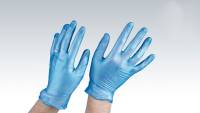 Starting at £0.72 £0.60  Starting at £7.15 £5.96  Starting at £7.19 £5.99  Starting at £9.60 £8.00 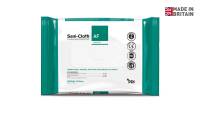 Starting at £2.82 £2.35  Starting at £5.94 £4.95  - 04 August 2016
- Air Care , Hand Hygiene , Menstrual Care , Menstrual Hygiene , Urinal & Toilet Care
Hair, Nail Salon Hygiene Tips And Good Practices [2023]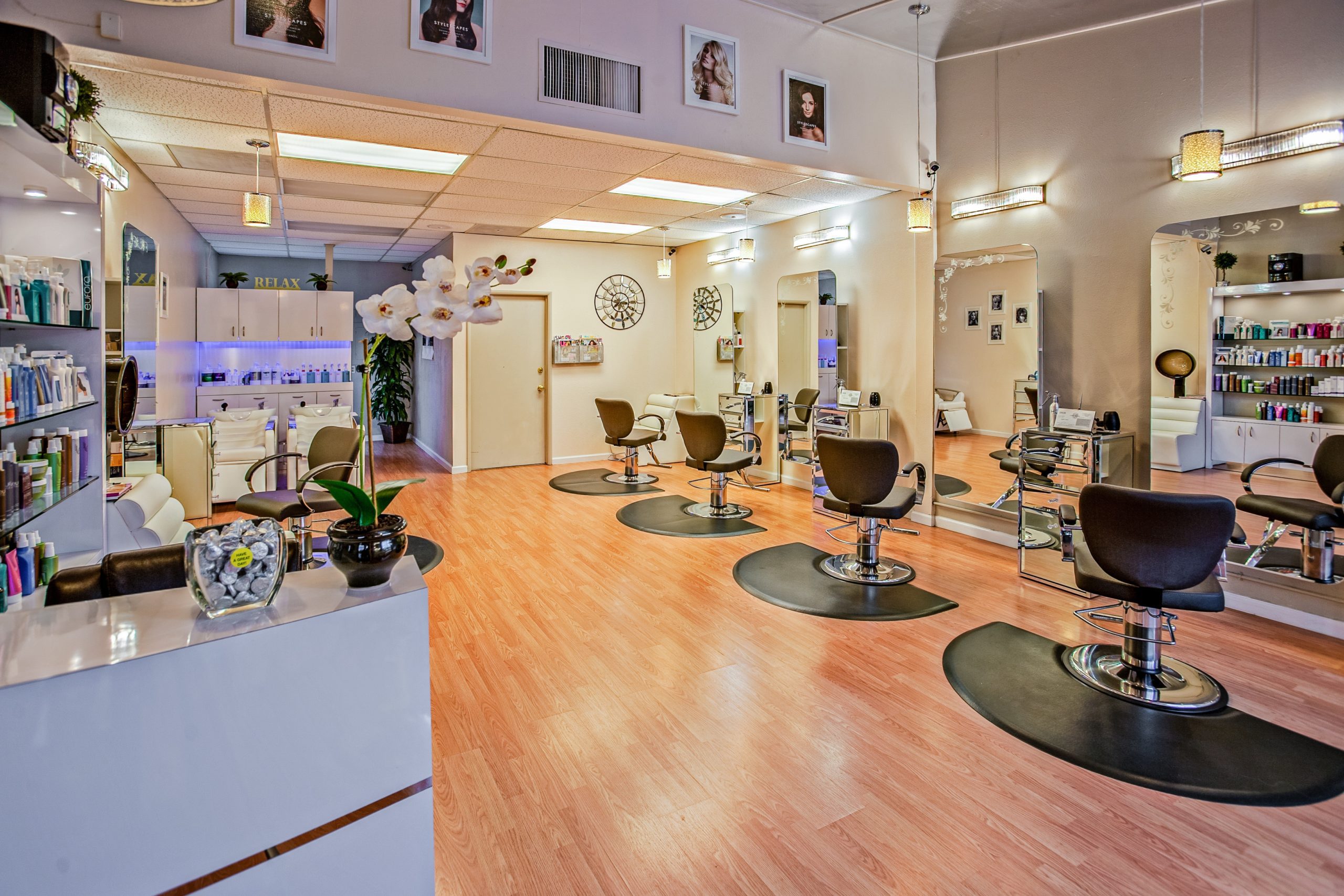 Table of Contents Updated on May 30, 2023 Salon Hygiene & SanitationIn the bustling world of beauty and personal care, hygiene takes center stage. Welcome to our comprehensive guide on Salon Hygiene Tips and Good Practices. This article is a treasure trove of information for salon owners, employees, and customers alike, emphasizing the importance of maintaining a clean and safe environment in salons. We delve into the nitty-gritty of hygiene in nail and hair salons, shedding light on the potential risks and how to mitigate them. From the significance of hand hygiene to the necessity of sanitizing surfaces and tools, we cover it all. Learn about the best practices that can help prevent the spread of infections and ensure a safe, enjoyable salon experience for everyone. Stay informed, stay safe, and let’s create a healthier salon environment together. Customers enjoy visiting the salon so they can sit back and relax while professionals take care of their nails and style their hair. Many see this as a time to unwind and treat themselves to a little luxury. However, clients and employees can acquire infections and viruses from dirty tools, unwashed hands, and contaminated equipment and work surfaces. While these can be harmful and difficult to treat, they can also be avoided with proper workplace and hand hygiene practices. Hygiene in Nail SalonsThere are approximately 375,000 nail technicians in the United States, 96% of which are female . When employees and clients sit across from each other, one of them is at risk for contact dermatitis, infections (like MRSA, M. fortuitum , and the fungal variety), viruses, Hepatitis B, and even HIV. However, this should not scare customers away from your facilities, as long as your professionals maintain good hand hygiene in addition to following the Occupational Safety and Health Administration (OSHA) recommendations. About 3.6 million cases of open wounds are reported in the US annually. Per OSHA and depending on which state salon employees work in, serving anyone with cuts, open wounds, blisters, or skin infections on their hands and/or feet is a health code violation. Those who have open cuts are at a much higher risk of contracting and spreading infections, as germs can get into broken skin more easily. It may seem unfortunate to turn a customer away, but it may be necessary in order to protect your staff and business. Salon owners should advise clients to always wash their hands with soap and water before meeting with their technicians, as plenty of sickness-inducing bacteria can live underneath nails, such as staphylococcus aureus , fungus, and yeast. Approximately 75% of nail salons in the US do not follow proper disinfection protocols. So, make sure your facility is prepared if your clients ask about the hygiene practices before sitting down to an appointment. Patrons have the right to ask a technician to wear gloves, as only 17% wear them as often as they should. Good Hygiene Practices for Nail SalonsTo ensure safer, more hygienic conditions for everyone, and to significantly decrease the chances of anything detrimental spreading, technicians must always: - Wear gloves
- Properly bandage open wounds
- Be vaccinated for Hepatitis B
- Wash hands and change gloves before and after each appointment
- Sanitize surfaces, like the nail table, chairs, and other common spaces after each visit
Hygiene in Hair SalonsViruses and infections can also be caught in hair salons. Hairdressers hands and tools are in clients hair for every wash, cut, and styling. Some of the tools they constantly use include scissors, razors, and clippers. Direct contact with skin can be made if the customer is receiving a very short haircut or a facial waxing, so there is always a chance of someone getting a nick or cut, increasing the risk of cross-contamination. Good Hygiene Practices for Hair SalonsTo minimize the hazard, hand hygiene and disinfection of tools are important. Aside from consistently cleaning equipment, stylists should also wash hands before and after: - Tending to a patron
- Touching a client or surroundings
- Exposure to bodily substance
- After removal of gloves
- After receiving payments and handling cash
Even though the risk of infection is there, businesses can minimize the spread of bacteria by following these tips to keep their patrons and staff at ease and safe. For more advice and to explore a range of hygiene products and solutions for your business, speak to the Citron Hygiene team today . Related posts:- Hygiene & Cleanliness In A Supermarket – Tips, Good Practices
- Construction Site Hygiene & Cleaning Tips for Business [2024]
- Hepatitis Risk in Washrooms: Protection & Hygiene Tips [2024]
- Hygiene Tips For Your Transportation Business
- Hygiene Tips for Workers in Healthcare Facilities [2024]
- Car Dealership Hygiene & Sanitation Tips – GUIDE [2024]
- Hygiene Tips for Your Business: Banks and Credit Unions
- Hygiene Tips for Your Business: Health and Country Clubs
Find out how we can elevate your washroom experience today.Guide de la dignité menstruelle au travail. " (Required) " indicates required fields Free menstrual product compliance guideGet your free trial today, get your free quote today. " * " indicates required fields  Why Choose Citron Hygiene? Hair and Beauty: Presenting a Professional Image- Kia ora koutou
- Hairdressing books
- Beauty books
- Online Resources
- Presenting a Professional Image
- Anatomy and Physiology
The importance of personal appearance in the beauty industry It is very important to make sure that your personal presentation and hygiene is at the highest standard when working within a salon. Personal presentation as a hairdresser or beautician is very important as it is the first impression a client gets of you. If they don’t like the look of you, it is unlikely that they are going to feel comfortable and may not trust you to complete the treatments they require. Also if you do not trust the person who is going to be taking care of you on that particular day, chances are when they go to apply many of the exotic and expensive skin treatments they really won't be caring about your well-being. Your image is also supposed to reflect the industry (McCarthy, 2013, para 1). Articles from the Industry Yur Topic - Personal presentation as a hairdresser or beautician is very important. Your image is also supposed to reflect the industry. When you look professional and tidy it suggests that you take pride in your workplace and what you do. Hair and Beauty Jobs - The name says it all really - "beauty industry". Beauty Therapists are in the profession of helping people look good and feel great. Haiku Deck - Unit 102 Presenting a professional image in a salon. Youtube video intro into Hair and Beauty sector - UV10343 intro into Hair and Beauty sector and Uv10344 presenting a professional image. Flying Solo - The image we portray sends an important message to our clients, as well as influences how we feel about ourselves. Therefore, as soloists, we too need to consider our professional image and how to dress for success.  - << Previous: Online Resources
- Next: Anatomy and Physiology >>
- Last Updated: Jul 18, 2024 4:05 PM
- URL: https://libguides.wintec.ac.nz/hairandbeauty
JavaScript seems to be disabled in your browser. For the best experience on our site, be sure to turn on Javascript in your browser. Latest Information - Help/Contact Us
- Select Brand
 The Importance of Salon Hygiene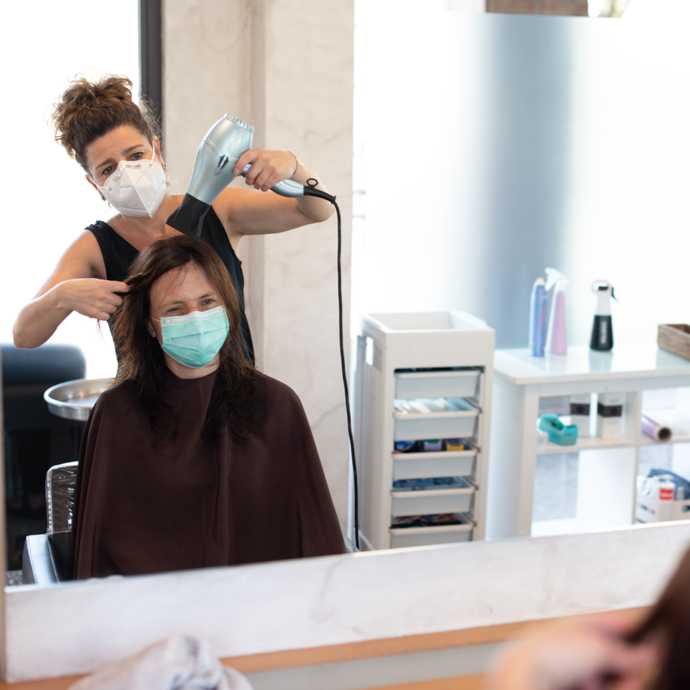 With COVID-19 having such a devastating effect across the globe, salon hygiene is so important to get right. Whether you are a hairdresser, beauty salon or nail bar, keeping your workspace clean and hygienic will be crucial in the everyday running of your business. Why are High Standards of Salon Hygiene So Crucial?Maintaining a high standard of hygiene in your salon is essential for protecting you, your clients and the public. A clean, sterile and safe space will encourage trust, encourage ongoing business and ensure issues such as cross-contamination, bacteria, and viruses are avoided. You and your employees should always be educated on standard hygiene practices to be enforced in a salon. 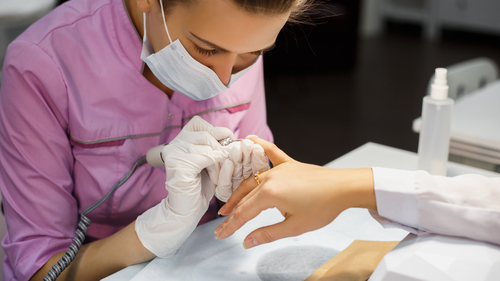  No products in the cart.  Beauty WarehouseAustralia's leading wholesaler for salon professionals.  The Importance of Hygiene in Salons and How to Enforce ThemIt is the primary responsibility of salon owners and employees to uphold excellent hygiene standards in their respective establishments. To avoid any mishaps such as cross-infection, salon employees must ensure that all tools, equipment, premises, and materials that are being utilised during treatments are not only kept clean but germ-free, too. Also, prevailing sanitary rules are to be followed at all times. A clean and sanitary salon guarantees continuous profits as clients are confident in the services they offer. Why is hygiene crucial in the successful operation of a salon?Hygiene is a collection of practices that aims to prevent disease and preserve health. This series of activities include both personal and public hygiene. Creating a hygienic environment in the salon has a direct influence on the welfare of personnel as well as that of clients. To protect yourself, your clientele, and public health, you should educate yourself on standard hygiene practices that are to be enforced in a salon. Bear in mind that a clean, safe, and sterile salon is key to success as it will attract more customers to your business. Standard Rules to Avoid Cross InfectionCross-infection occurs either by direct personal contact or through indirect contact with a contaminated object. To prevent the incidence of cross-infection, here are rules you must follow at work: – Have a clear understanding to recognise signs of infection Ø Refrain from contact with the infected person that may put clients at risk. Ø Regular sanitation of treatment areas and workstations is a must. Ø Provide clients with their towels and gown during treatment. Ø Do not forget to wash hands before, during, and after treatment interactions for each client. Ø Tools, equipment, and machinery are to be cleaned and sterilised regularly. Ø Wear personal protective articles during treatments such as gloves, an apron, and a mask if needed. Ø Proper disposal of waste is a requirement. Dispose of all wastes in a lined trash bin during treatment. Ø Drinking and eating are prohibited inside the salon. The Difference Between Sanitation and Sterilisation?In essence, sanitation is a collective terminology for activities that clean and remove dirt to reduce infection. Sanitation practices establish cleanliness but do not necessarily eradicate microorganisms. Sterilisation, on the other hand, is a collective terminology for procedures that effectively kill microorganisms to establish a sterile environment.  What procedures are to be used and followed in the salon?It is recommended to enforce both sanitation and sterilisation practices in a salon. - Wash hands with anti-bacterial or disinfectant soap.
- Use and application of disinfectants and antiseptic formulations on equipment and workstations.
- Sterilisation
- Immerse tools into boiling water for 3 to 5 minutes for proper sterilisation.
- Auto-clave is a machine that works similarly to a pressure cooker. It is a piece of equipment common in salons and is used to sterilize metal and glass tools. A complete round of auto-clave takes about 11 to 15 minutes.
Here’s how you should wash your hands when working in a salonThe hands come into direct contact with numerous objects throughout the day. Other parts of our body come into direct or indirect contact with external items, too. Due to this fact alone, hands pose the biggest health risk if not sanitised regularly. Activities inside the salon involve contact with people and items that may potentially be contaminated. Dirty hands can pose a potential risk of cross-infection. It is therefore important to wash your hands regularly throughout the entire shift, and most importantly, in between clients. Do not forget to keep the wash clean and tidy, too! It is recommended to use an anti-bacterial soap or cleanser that features skin conditioning agents so your hands do not become irritated or dry over time. If your work entails you to perform manicures and pedicures or other procedures that involve skin-to-skin contact, make sure that the hands and feet of your clients are washed thoroughly before treatment. After washing, the hands and feet should be cleansed with an alcohol-based sanitizer, too. Sanitisers deliver further protection not only for you but for clients as well. How do you keep work surfaces clean?It is of utmost importance that work surfaces in the salon are regularly kept clean to avoid cross-infection altogether. Keeping work surfaces clean and tidy also add to the overall neat aesthetics of a salon. Invest in powerful cleaning products as they guarantee optimum cleaning efficiency. Use professional-grade cleaning products formulated to thoroughly cleanse and sanitise different types of work surfaces. Disinfectant wipes are also a great addition to your salon cleaning arsenal as they remove small particles such as dust and allergens. You may also use spray disinfectants or refillable spray bottles for cleaning products for a more practical cleaning solution for your salon. Objects that are commonly used by all personnel and clients such as phones and keyboards are excellent hosts to microorganisms. It is imperative to clean these items with disinfectants, too. How do you clean salon chairs and couches?Salon chairs are most commonly made from either PVC or vinyl. These two are popular in salons as they are comfortable and very easy to clean, too. Use the right cleansing product that can safely clean PVC and vinyl. Do not use alcohol-based cleansing agents on these materials as they can get brittle and eventually crack over time. Cracked surfaces will be more difficult to disinfect as they become areas where bacteria can easily multiply. Chairs and couches are to be cleaned on a regular basis. A small amount of infected blood could be the cause of infection when not wiped off couches and other surfaces. Good housekeeping practices should be implemented in the salon to prevent cross-infection. How do you sanitise and sterilize salon instruments and tools?All salon instruments and tools used by employees should be sanitised regularly and in between clients. For tools that come in direct contact with the skin, it is a requirement to sterilize them accordingly. Do not attempt to cut corners when it comes to sanitation and sterilisation. Always follow the manufacturer’s instructions on how to clean equipment and tools. Establishing and implementing good hygiene practices in a salon is not a difficult feat. Not only will your salon look attractive, but it will also be a safer place for you and your clients, too! Check out our wide range of Disinfectants and Hygiene products here.  Related Posts Discover The Secret to Luxurious, Luscious Lashes Why is Eye Mask A Must-Have for your Skincare Routine? Hard Wax or Soft Wax?- Keeping Your Blonde Bright and Healthy
- Save Dry Winter Hair with the Top Hair Masks of 2024
- Wax Like a Pro: Here are Advanced Tips and Tricks for Salon Owners
- Gentle on Skin, Tough on Hair: Best Waxing Products for Sensitive Skin
- For Smooth, Supple Skin: The Benefits and How-to’s of Body Scrubs
CollectionsOrganic Collections ABCDEH Beauty - Forever Young Pure Skin Solutions  Salon Safety 101: Best Practices for Maintaining a Clean and Hygienic Environment Ensuring a clean and hygienic environment is paramount in the salon industry to protect the health and safety of both clients and staff. Implementing rigorous sanitation protocols and following best practices for infection control are essential for maintaining a safe salon environment. Here are some key guidelines and practices for salon safety: 1. Sanitation ProtocolsCleaning and Disinfecting Surfaces: Regularly clean and disinfect all surfaces, including countertops, treatment chairs, tools, and equipment, using EPA-approved disinfectants. Pay special attention to high-touch areas such as doorknobs, light switches, and restroom fixtures. Tools and Equipment: Clean and disinfect all reusable tools and equipment, such as scissors, combs, brushes, and nail implements, between each client using hospital-grade disinfectants or autoclave sterilization. Follow manufacturer's instructions for proper cleaning and sterilization procedures. Linens and Towels: Use clean and laundered linens, towels, and capes for each client. Store used linens in a designated laundry hamper or bin until they can be laundered with hot water and detergent. 2. Personal HygieneHand Hygiene: Encourage frequent hand washing and provide hand sanitizer stations throughout the salon for both clients and staff. Ensure that all staff members adhere to proper hand hygiene practices, including washing hands with soap and water for at least 20 seconds before and after each client interaction. Personal Protective Equipment (PPE): Provide disposable gloves, masks, and face shields for salon staff to wear during client services, particularly for procedures that involve close contact or potential exposure to bodily fluids. 3. Client Screening and Health ChecksPre-Appointment Screening: Conduct pre-appointment screenings for clients to assess their health status and potential exposure to infectious diseases. Ask clients about any symptoms of illness or recent travel to high-risk areas before scheduling appointments. Temperature Checks: Perform temperature checks upon arrival for both clients and staff using contactless infrared thermometers. Anyone exhibiting signs of fever or illness should be asked to reschedule their appointment and seek medical attention if necessary. 4. Social Distancing MeasuresSpacing Between Stations: Arrange salon stations and seating areas to allow for adequate social distancing between clients. Maintain a minimum distance of six feet between individuals whenever possible. Appointment Scheduling: Implement staggered appointment times and limit the number of clients allowed in the salon at any given time to minimize overcrowding and facilitate social distancing. 5. Education and TrainingStaff Training: Provide comprehensive training and education to salon staff on proper sanitation protocols, infection control practices, and salon safety guidelines. Ensure that all staff members are knowledgeable about best practices for maintaining a clean and hygienic salon environment. Client Education: Communicate salon safety measures and protocols to clients through signage, email communications, and social media channels. Provide information about what clients can expect during their salon visit and encourage compliance with safety guidelines. 6. Ongoing Monitoring and ComplianceRegular Audits and Inspections: Conduct regular audits and inspections of the salon to ensure compliance with sanitation protocols and safety guidelines. Monitor staff adherence to hygiene practices and address any lapses or deficiencies promptly. Stay Informed: Stay updated on local, state, and federal regulations and guidelines related to salon safety and sanitation. Adapt salon protocols and procedures as needed based on evolving public health recommendations and guidelines. Maintaining a clean and hygienic salon environment is essential for protecting the health and safety of clients and staff. By implementing rigorous sanitation protocols, promoting personal hygiene practices, screening clients for illness, enforcing social distancing measures, providing education and training, and monitoring compliance, salon owners can create a safe and welcoming environment for everyone. Prioritize salon safety as a top priority and take proactive measures to mitigate the risk of infection and ensure a positive salon experience for all.  Online appointment software benefits 5 Proven Strategies to Expand Your Barber Business and Boost Revenue.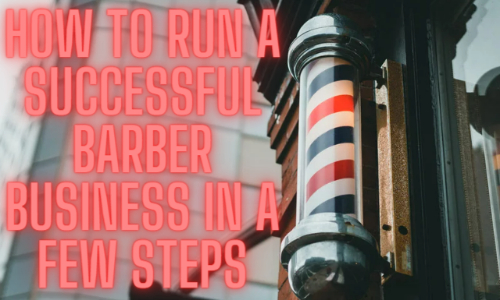 How to run a successful barber business in a few steps From Passion to Profit: How to Turn Your Barbering Hobby into a Successful Business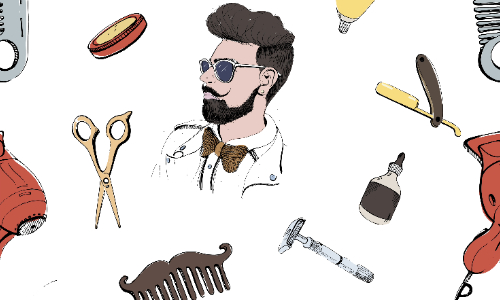 The Insider's Guide to Marketing Your Barber Shop for Maximum ImpactSubscribe now. To sign-up a free and amazing offers and other cool things stay with us and please subscribe us Subscribe To Our NewsletterSubscribe to our newsletter and stay updated. To continue your bookingAlready have an account?   The Importance of Hygiene in a Salon and Spa – Safe & Hygienic Working Practises during Coronavirus Whatever the type of beauty and hair business, every workplace must be a fully hygienic environment. This is extremely important in an establishment such as salon, spa, nail spa, makeup studios, eyelashes, waxing, skin and hair clinics that see so many different people passing through every day. On top of heavy footfall, working in a salon and spa environment also means that you and your team are exposed to many different clients and performing treatments everywhere from their hair and scalp to their fingernails and toenails, to their most intimate areas. With all of this in mind, as a salon and spa owner, it is imperative that excellent salon and spa hygiene and good housekeeping within your business is at the forefront of your mind, not only for your staff but also for your visitors and clients to ensure that your business continues to run effectively and nobody’s health is put at risk. Why is it so important to maintain standards of hygiene in a beauty and wellness business- Salon and Spas?Maintaining high standards of hygiene in your salon and spa is vital to prevent the risks of cross-contamination especially during the time of the Coronavirus pandemic. Whether it’s from yourself, other clients or tools, virus and bacteria can easily spread if you don’t do your bit to put a stop to them. Tools such as combs, scissors, tweezers are prime candidates for cross-contamination – plus, clients would probably feel a little grossed out if they knew you’d used the same scissors on all clients without cleaning them! A virus can easily spread between clients this way and can cause infections that will make them very unlikely to come back to you. The best thing to do is to make hygiene a priority in the day-to-day running of your salon and spa. You could have a salon and spa hygiene checklist to remind the whole team of best practices and give training on the best ways to keep the salon clean. Safe and hygienic working practices in a salon and spa…Who is responsible for maintaining a hygienic salon and spa?It is the responsibility of everyone working within your salon and spa business to practice basic hygiene at the very least. Ensure that all hygienic responsibilities, such as sterilizing combs or keeping the floor clean after a client has had a haircut, or their nails filed have been delegated to your stylists, therapists or salon support staff. It is recommended to create a daily duties checklist to assign tasks and to keep a record of when each job has been carried out and by whom. This includes all areas, from the salon floor, to the toilet, the kitchen, the reception area and everywhere in between. This will ensure that nothing can be forgotten whilst keeping your salon running efficiently. Keeping salon furniture clean…It goes without saying that your salon premises should always be kept clean and hygienic. Treatment areas with a high volume of daily use, such as beauty couches and chairs, should be thoroughly cleaned between each client and/or a new covering placed over the surface. Most salon chairs are made from PVC or vinyl, making them easy to wipe down and clean with disinfectant. However, it is important to make sure you use the right cleaning products. It is worth noting that any disinfectant containing alcohol should be avoided as it is likely that it will react with the PVC or vinyl, making it brittle and eventually causing it to crack. Once you get a broken surface on any material, it is extremely difficult to disinfect it properly, resulting in an area where bacteria can harvest and multiply. Avoiding cross-contamination of equipment…It is important that any equipment is thoroughly cleaned between usage, and it is imperative that this procedure is not shortcutted. Tools that meet multiple clients such as combs, brushes, rollers, clippers and nail tools should be repeatedly cleaned between usage and be kept in a clean and dry condition when they are not required. If a client comes in who clearly has any infection you are treating, it’s often best to err on the side of caution and not treat them. Not only will they increase cross-contamination risks, but you could also make the condition worse. However, be careful to not offend or embarrass the client – ask them if they can get advice from a doctor first, as you wouldn’t like to cause them further harm. It is always recommended following the advice on the label of your chosen cleaning solution for any special requirements, though disinfectant and hot water is also effective in keeping tools sterile. Towels and other linen should also be washed regularly as stained, used towels not only look unsightly but could also harbor germs if left lying around damp. Keeping the salon floor clean….With a flow of footfall, the floor of your salon is a hive of activity and therefore always needs to remain clean. If fly away nail extensions have gone missing, or a build-up of hair has accumulated around your cutting area, for example, this needs to be cleared away quickly, not only to avoid accidents such as slips and trips but to also avoid bacteria and viruses spreading from location to location. At the end of each day, ensure that you undertake a thorough floor clean, ready for the next day! The importance of personal hygiene in a salon…It is important that all salon and spa staff understand the importance of personal hygiene when working in a hair or beauty salon. Firstly, it’s important to maintain a professional image that ensures your client is confident in visiting you. Secondly, poor personal hygiene can lead to the spread of bacteria and viruses – things like dirty nails and unwashed hands and clothes can harbor germs and viruses, which could potentially transfer to clients. For some treatments, disposable gloves might be preferable to hand washing alone when it comes to very sensitive areas and treatments, such as eyelash application and nails extensions It goes without saying that it is your duty to ensure that your staff keeps themselves clean when undertaking treatments from client to client. Simple practices such as ensuring hands are clean and uniforms are free of any nail shavings or hair are all basic things to help your salon stay hygienic. Keeping on top of salon hygiene isn’t tasking and is a serious practice to ensure that your salon and spa complies with the necessary regulations. It also ensures that your business not only looks more appealing but builds trust with your clients as a salon and spa that pays attention to detail. Make sure your salon has tissue, soap, and alcohol-based hand cleansers to encourage healthful habits. Keep your salon or spa well-stocked.Post signage and communicate with others.. Post signage at the front desk, as well as in the salon break room, reminding guests and employees about the importance of hygiene standards such as hand washing, sanitizer, wiping down stations after use, covering coughs, and hands-off policies. Also, it’s important to share with your clientele the precautions your salon is taking to do its part in helping to prevent the spread of the coronavirus—during online bookings, on the phone, via text, and in-person. Salon hygiene products checklist…Do you have everything you need in your salon to maintain safe and hygienic working practices? Check you have the following, and see our full salon hygiene range for more… - Disinfectant for tools
- Disinfectant jar
- Disposable gloves
- Sterilizers and Cleaners
- Hand soap and sanitizer
- Clean towels and paper towels
- Antibacterial surface cleaner
- Beauty couch roll or clean covers
RELATED POSTS How to Reopen Your Salon Safely After the Lockdown SMS Templates CoronaVirus – COVID-19 for Salon and Spa 9 Tips for Salons, Spas, and Wellness Businesses in India about COVID-19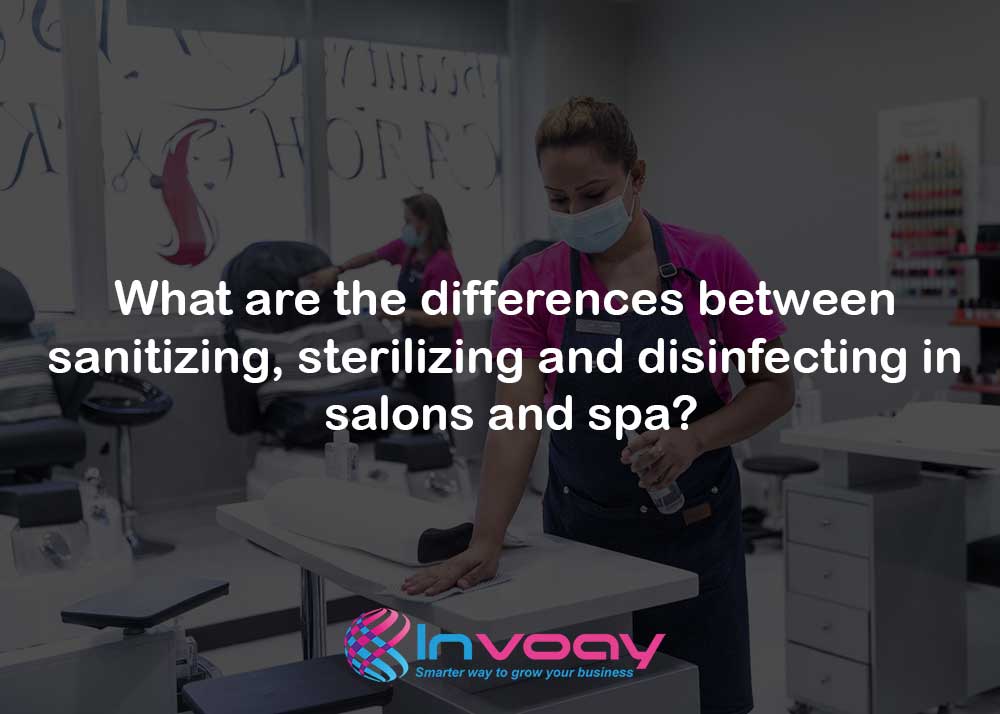 What are the differences between sanitizing, sterilizing and disinfecting in salons and spa?Sorry, the comment form is closed at this time. Spend $50 and get free shipping! Your cart is empty Free Shipping on orders over $50  All You Need To Know About Salon Sanitation and HygieneHygiene is the science that deals with the prevention of disease and the preservation and improvement of health. It includes personal hygiene and public hygiene. Each is essential and has a direct bearing on your own welfare as well as your client’s. To protect yourself, your clients and public health, you should know when, why and how to use sterilization and sanitation. A clean, safe, sterile salon and station will set you apart from much of the competition. METHODS OF STERILIZATION There are five methods of sterilization that you should be familiar with: - Boiling in water at 212 degrees Fahrenheit or 100 degrees Centigrade.
- Steaming in an airtight chamber.
- Baking in an oven
- Ultra Violet Rays
- Vapors (fumigation)
- Antiseptics and Disinfectants: Effective Chemical Agents
- An antiseptic is a sanitizing agent that can be applied to the skin and nails
- A basic level of decontamination for sanitation- reduces the number of harmful organisms to a safe level of. Sanitation simply means cleaning first by physically removing all visible debris, and then washing with liquid soap, detergents or antiseptics. An antiseptic is a sanitizing agent that can be applied to the skin and nails.
- Disinfection- killing of microorganisms capable of causing infection on non-living surfaces. Disinfectants should not be used on the skin, nails or any part of the body. All disinfectants must be mixed, used and disposed of according to the manufacturer’s instructions. Remember, before items can be properly disinfected, they must first be cleaned.
- The laws regarding disinfectants vary from state to state; due to these restrictions we can only make suggestions. Please consult your local governing body regarding your national standards for disinfection.
- If nothing else is available, clean tools with JESSICA Hand & Body Bath with warm water, followed by bleach as a disinfectant.
- What about porous files, orangewood sticks, etc.?
- Because they can’t be disinfected with the same chemicals as hard surfaced instruments. Many governments require disposal after one use. Others allow reuse on the same person only- BUT saving tools for the same person does not eliminate the need to clean and disinfect!
- NOTE: Remember to recommend the correct treatment schedule for your client.
RULES OF SANITATION - Keep all containers labeled and covered.
- Wash your own hands thoroughly before and after each treatment or spray your hands with antibacterial disinfectant.
- Use clean and sterile towels for each client.
- Implements and tools must be sterilized the following way:
- Wash implements in hot soapy water.
- Rinse, then immerse them in sterilizing solution (alcohol).
- Spray implements with antibacterial disinfectant prior to use on a client.
- Keep all instruments in alcohol during treatment.
- Keep all products in good, clean condition.
- Apply antiseptic immediately if the skin is cut.
- Avoid pushing the cuticle back too far.
- Do not apply too much pressure at the base of the nail.
- Wear clean uniforms at all times.
Leave a commentAll comments are moderated before being published - Industry News
- Products & Gadgets
- Brand Reviews
- Hair & Beauty Trends
- Celebrity & Fashion
- Visual Stories
- Salon Management
- Step By Step
- Collections
- Special Supplement
- Subscribe Now
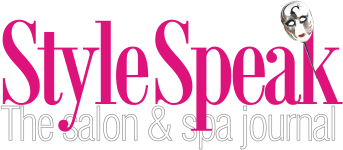 How to maintain safety and hygiene in salons?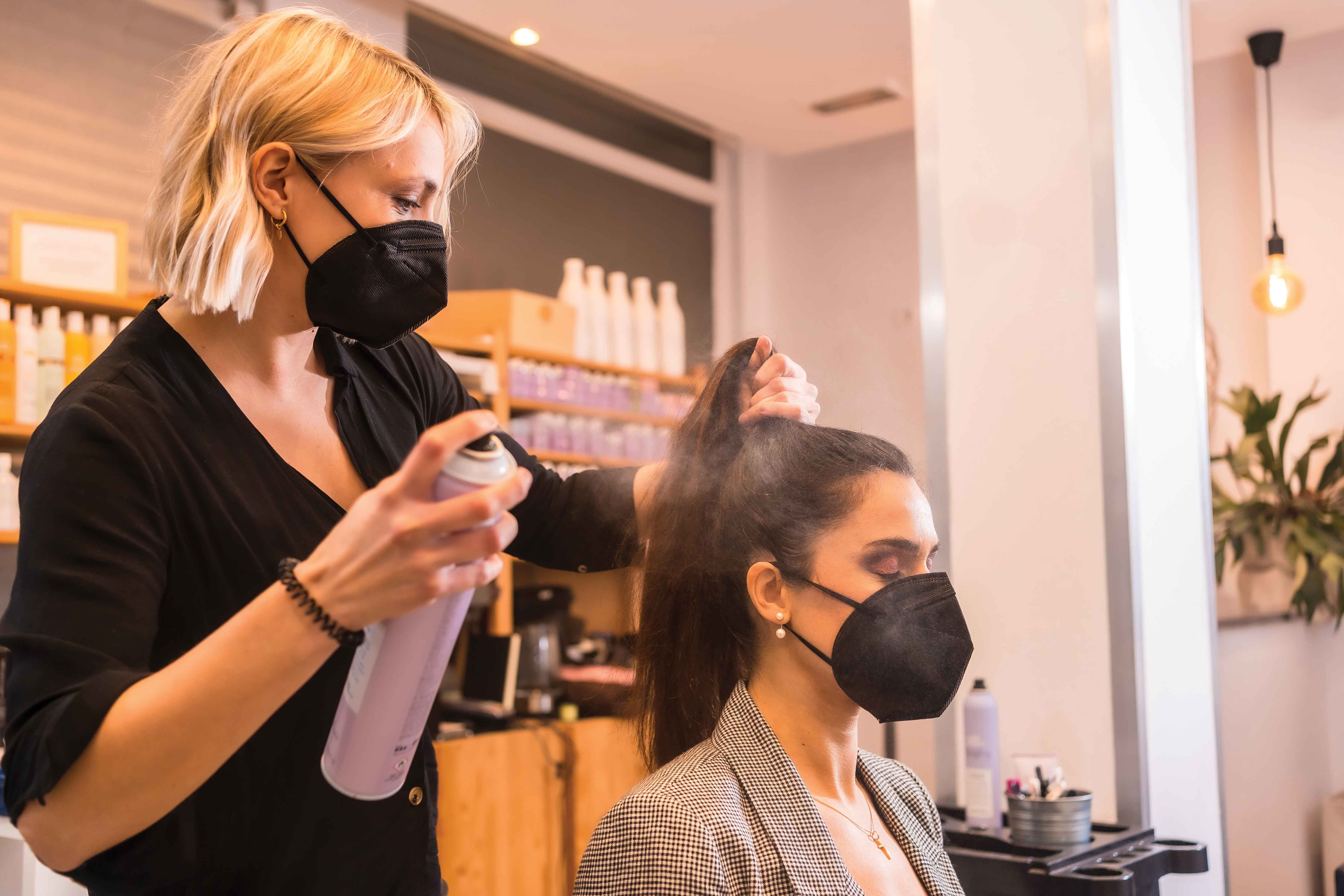 StyleSpeak decodes the necessary measures to keep clients happy with expert inputsH ygiene is one of the most discussed topics in every industry. The beauty industry has always been careful about it and after the covid pandemic, hygiene protocols have scaled up for the better. On a day to day basis, salons are exposed to clients who come for hair, nail or scalp treatments. During the treatments, there are chances of spillovers. This lays emphasis on the hygiene of a salon, which can’t be stressed enough. It is the prerogative of the salon owner to ensure the salon functions keeping hygiene at the forefront. 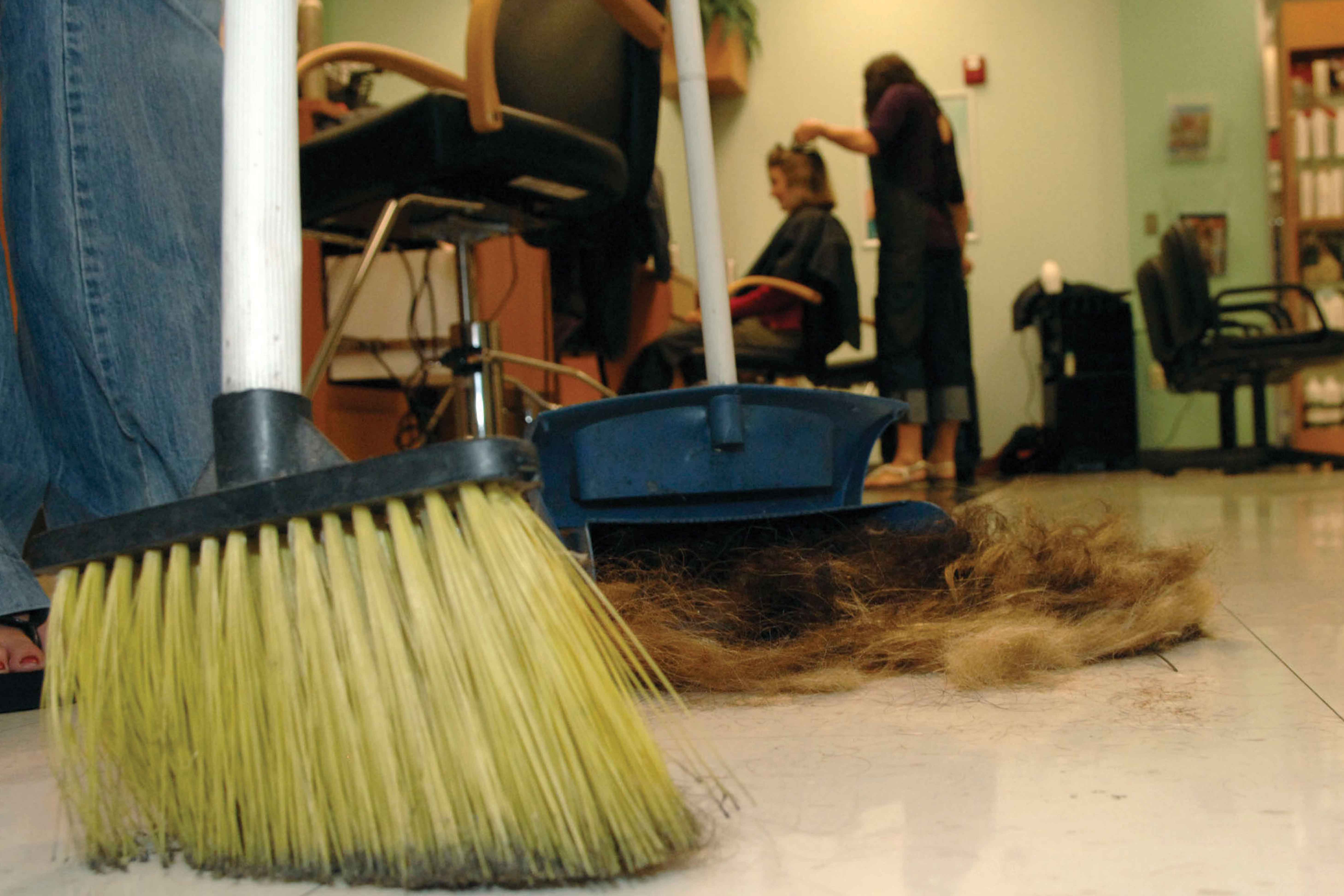 Why maintaining hygiene is essential in salons?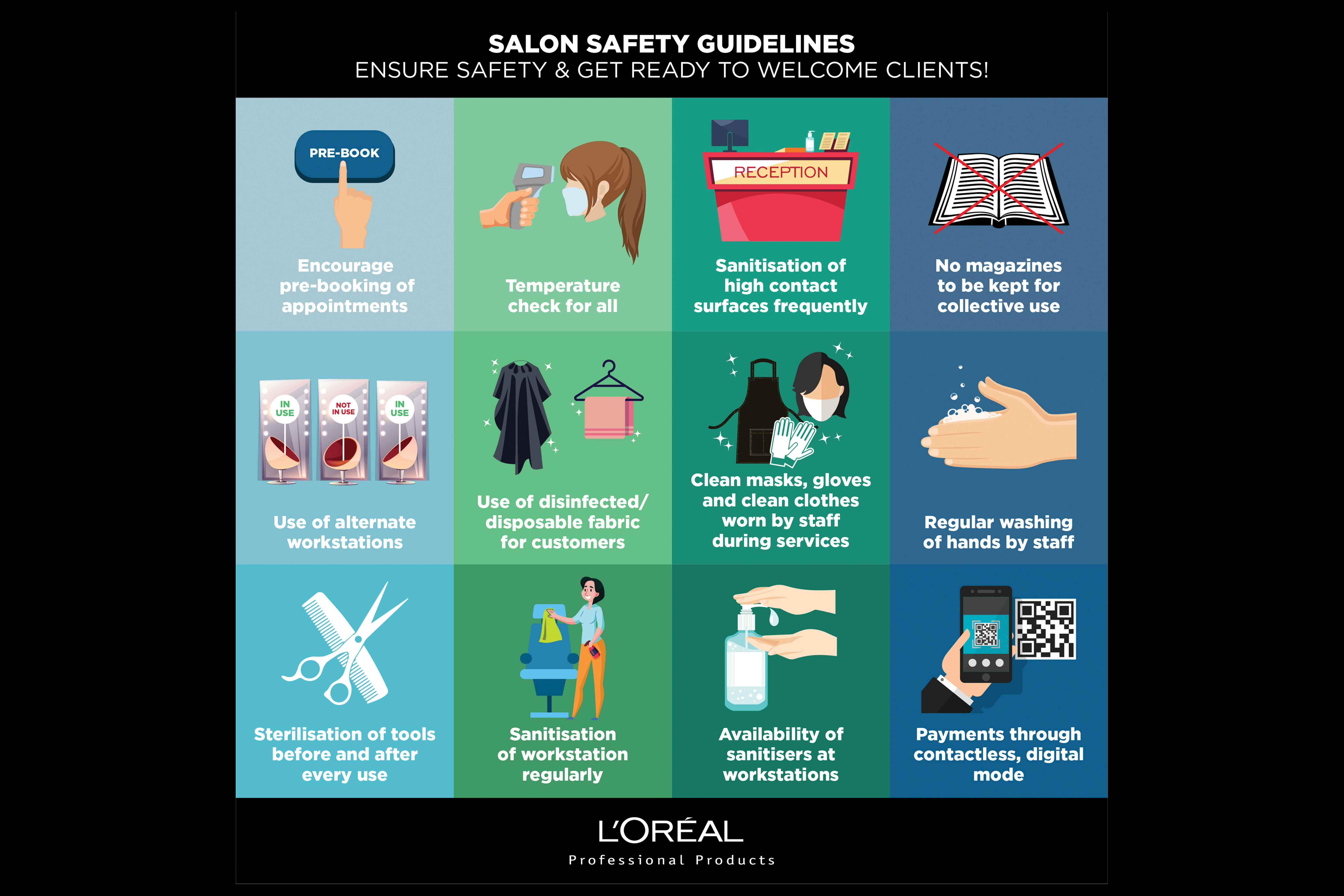 To control infection, Neeru suggests the following measures that are followed in her salon: - Use clean, disinfected and properly stored tools and products on clients
- Keep all products fluids, semi fluids, creams, waxes and powders in clean covered containers
- Dispense it in a manner that prevents contamination
- Always use spatulas or pumps to take out product from the container
- Never use hands/ fingers to remove product and always wash hands after working with a client
- Disinfect/ sanitize workstation
- Monodose treatments kits ensure less contamination of products but it needs to be discarded properly
- Use disposable towels or if towels are being used, towels need to be replaced.
- Ask clients to wash their hands or sanitize before providing a service
- Hairdressers/ therapists should wear masks while doing a service
- If the team member is not keeping well, ask them to wear a mask while at work or allow them to take an off
 Infections can not only breed in the salon or spa area but also in bathrooms and the pantry area. The hygiene of a store or salon can be told by the cleanliness of the salon bathroom. Neeru adds, “At Play we maintain a checklist in these areas where the store manager checks it 4 times a day. The garbage is emptied in the night before we close. Pest control is the other solution from keeping the above in check. All the drains are cleaned and dry clogged twice a month with drainex.” Aromas influence footfall in salons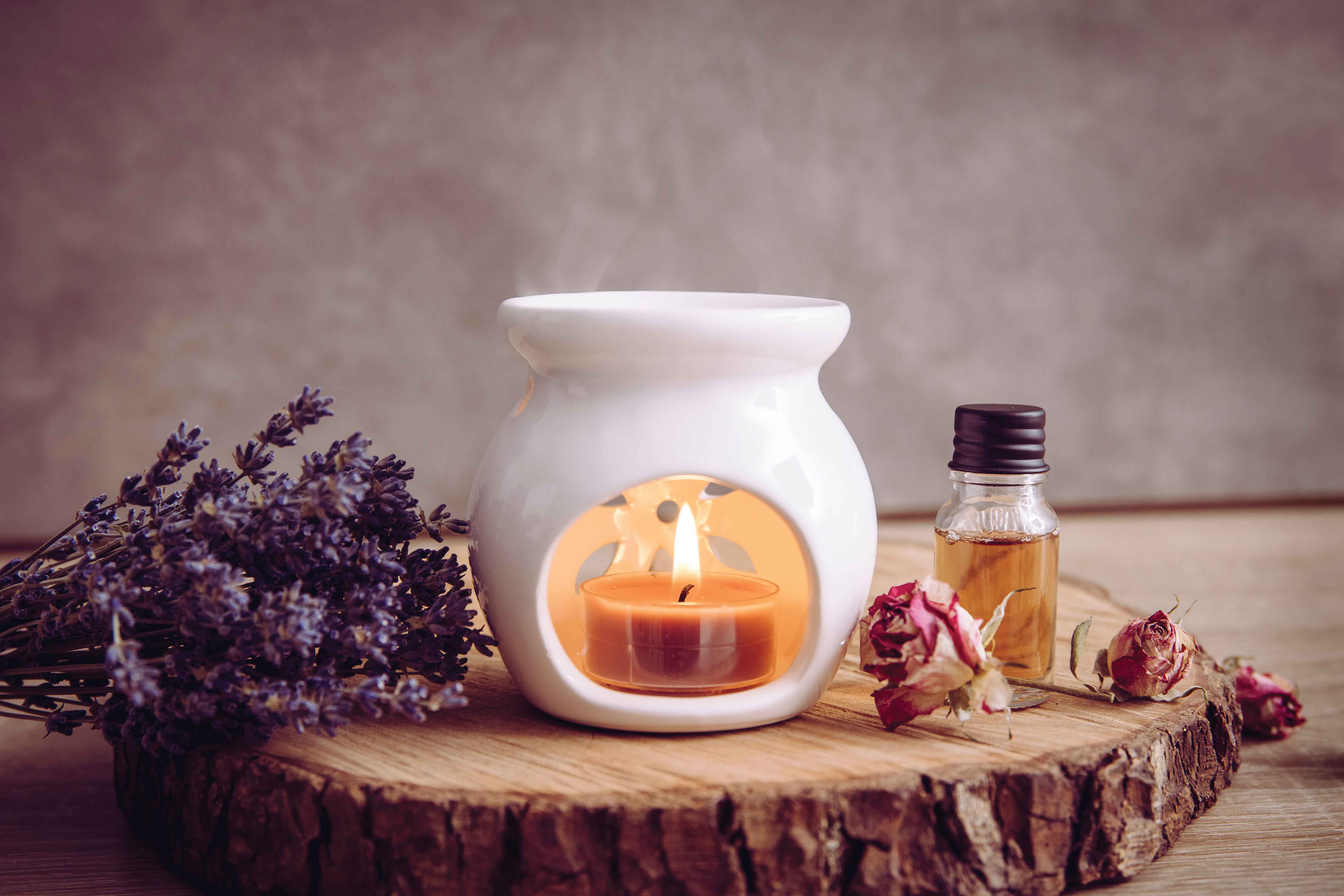 Neeru emphasizes further, “It’s important to note that aromatherapy is just one part of the experience. The salon’s aromatic ambience should match the decor and music. A good aroma can establish a ‘memory’ effect. Customers might recall the salon and Spa visit, when they get exposed to a similar aroma. The memory will send them an automatic reminder that might bring them straight back to the salon.” The importance of hygiene in a beauty salon cannot be stressed enough, and it is the responsibility of the owner as well as the staff to ensure that safe and hygienic working practices are followed at all times. you might also like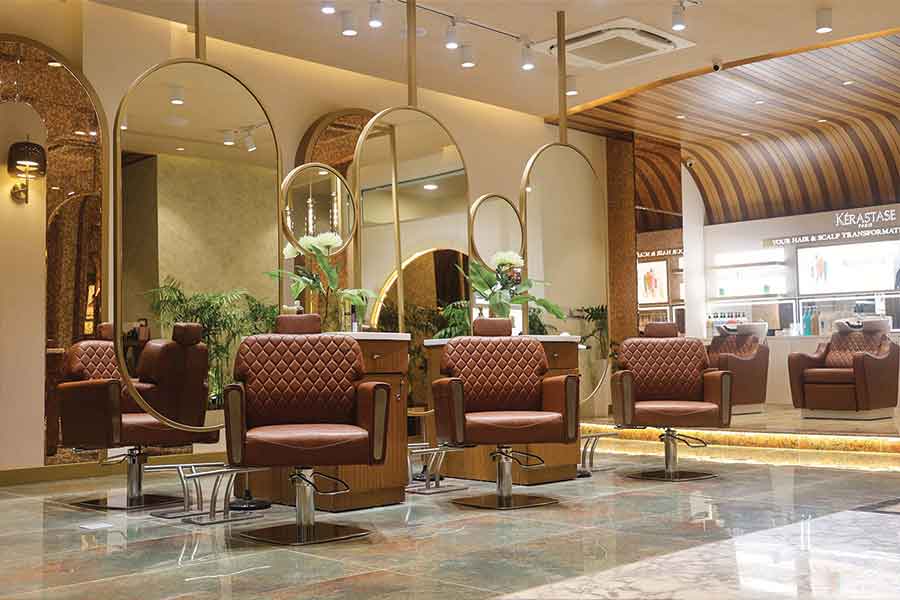 Salon Management – Navigating Franchising Opportunities and Challenges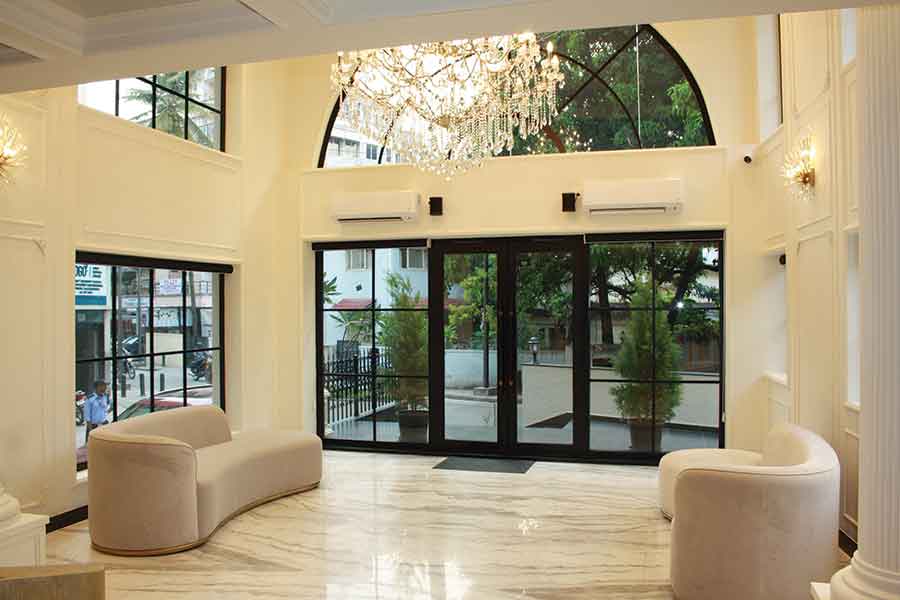 Bespoke Skincare Unveiling the Unseen: Exploring the Secrets of Salon Gems Salon furniture takes the sustainable route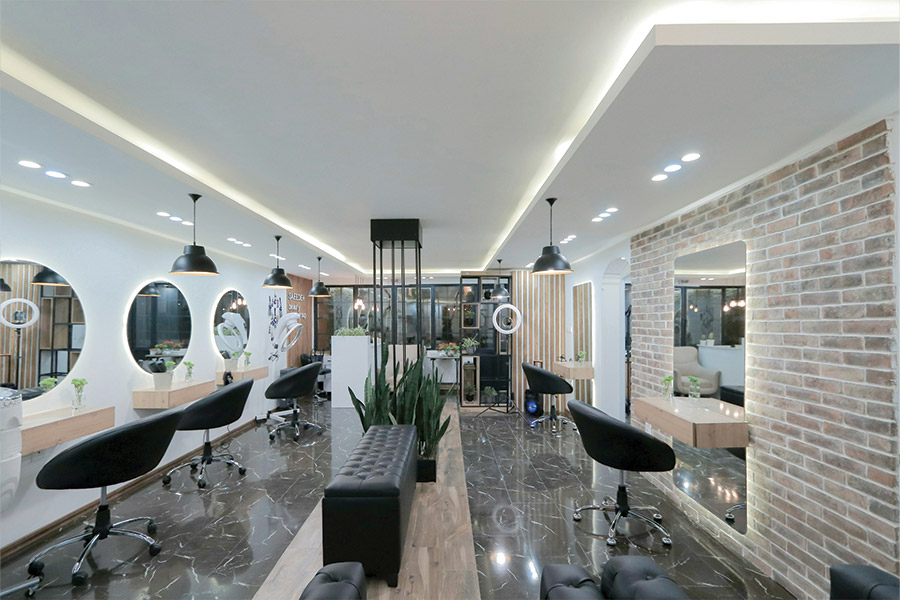 Tech-savvy Salon: Integrate smart solutions to transform your business Spa Interiors embrace green elements Teysha Technologies Designs Novel Product To Eliminate 8,700 Tonnes of Microplastics Used in Cosmetics Global Spa Market To Touch US$156.1 Billion by 2027: GWI Report Aman Makes Novak Djokovic Its Global Wellness Advisor Dyson Launches New Haircare Products Mary Kay Becomes the World Bestseller in Skincare and Colour Cosmetics stay connected Hotel Rest Time View prices for your travel dates- Excellent 2
- Very Good 0
- All languages ( 2 )
- Russian ( 2 )
- English ( 0 )
Own or manage this property? Claim your listing for free to respond to reviews, update your profile and much more. HOTEL REST TIMEOmsk Oblast| |
|---|
| | | Омская область | | | | Anthem: | | | | Coordinates: 73°16′E / 56.217°N 73.267°E / 56.217; 73.267 | | Country | |
|---|
| | |
|---|
| | |
|---|
| Administrative center | |
|---|
| Government |
|---|
| • Body | |
|---|
| • | (acting) |
|---|
| Area |
|---|
| • Total | 141,140 km (54,490 sq mi) |
|---|
| • Rank | |
|---|
| Population ( ) |
|---|
| • Total | 1,858,798 |
|---|
| • Estimate | 1,960,081 |
|---|
| • Rank | |
|---|
| • Density | 13/km (34/sq mi) |
|---|
| • | 73.5% |
|---|
| • | 26.5% |
|---|
| | ( ) |
|---|
| | RU-OMS |
|---|
| | 55 |
|---|
| ID | 52000000 |
|---|
| Official languages | |
|---|
| Website | |
|---|
Omsk Oblast ( Russian : О́мская о́бласть , romanized : Omskaya oblast' ) is a federal subject of Russia (an oblast ), located in southwestern Siberia . The oblast has an area of 139,700 square kilometers (53,900 sq mi) . Its population is 1,977,665 ( 2010 Census ) [9] with the majority, 1.12 million, living in Omsk , the administrative center . Prehistory and the Middle AgesExploration of siberia, russian empire, soviet years, post-soviet era, administrative divisions, demographics, notable people, sister relationships.  The oblast borders Tyumen Oblast in the north and west, Novosibirsk Oblast and Tomsk Oblast in the east, and Kazakhstan in the south. Omsk Oblast shares borders with Kazakhstan ( North Kazakhstan Region and Pavlodar Region ) to the south, Tyumen Oblast in the west and Novosibirsk Oblast and Tomsk Oblast in the east. It is included in the Siberian Federal District . The territory stretches for 600 km (370 mi) from north to south and 300 km (190 mi) from west to east. The main water artery is the Irtysh River and its tributaries the Ishim , Om , Osha , and Tara Rivers. The region is located in the West Siberian Plain , consisting of mostly flat terrain. In the south is the Ishim Plain , gradually turning into steppe, forest and swampy taiga to the north. The soil is sandy and silty. [10] Along the Irtysh River, in t. N. Irtysh region, there is an "oasis" microclimate, with a wooded landscape and gullies. There, the most fertile land in the region can be found. The Omsk region contains many lakes, the largest of which are Tenis -Saltaim, Ik, Ebeyty , Ulzhay and Tobol-Kushly. The highest elevation in the Omsk region - about 150 m (490 ft) Upland village, the lowest elevation is the water's edge on the Irtysh - 41 metres (135 ft) , near the village of Little Beach. [ clarification needed ] The property is located in Omsk region 28 specially protected natural territories of regional destinations. Including parks in Bolshereche and Omsk ("Bird's harbor"). [ clarification needed ] The oblast has a classic continental climate, with cold, snowy winters and hot, dry summers. Average January temperatures range from −42 to −30 °C (−44 to −22 °F) . Average July temperatures range from 25 to 28 °C (77 to 82 °F) and can reach up to 35 °C (95 °F) and even 40 °C (104 °F) . Annual rainfall averages 300–400 mm (12–16 in) . Sunny days predominate. The southern plains have notably longer and warmer summers and a delayed onset of freezing temperatures. They are also significantly drier than the northern forests, receiving only 250–300 mm (9.8–11.8 in) precipitation annually. Winters, however, are as severe on the plains as they are further north. Spring rains are rare, but late spring freezes are not. The early part of the summer is frequently dominated by hot, dry southern winds. As of 1 February 2016 , [ update ] on the territory of the Omsk region, there are 35 areas that have the status of protected areas (PAs), regional and local importance. Archeological findings indicate that the present day territory of the oblast has been inhabited for the last 14,000 years. Neolithic societies in the area lived by fishing and hunting. About three thousand years ago, pastoralism began to take hold. Ust'-Ishim man , the remains of a man that lived 45,000 years ago, was discovered in Omsk Oblast. Various Turkic states dominated the area throughout the Medieval era. The most notable of these were the Western Turkic Khaganate and the Siberian Khanate . Siberian Tatars , Mongols , Khanty and Mansi tribes, along with others, inhabited the territory. The Russian history of Omsk began with the 1584 arrival of a Cossack force under the command of ataman Yermak Timofeyevich , who defeated local rulers and established nominal Russian control of the area. To support further expansion tsars Feodor I and Boris Godunov initiated the construction of fortified settlements and military outposts in the south of Siberia in order to defend their subjects from raiding nomadic tribesmen and to exert authority over local populations, specifically over the tribute-paying Siberian Tatars of The Baraba Lands. The first permanent Russian settlement in the region, the city of Tara , was founded in 1594, soon it began to play an important part in fur trade that connected Russia with Central Asia and China. In 1716 a fortress was constructed at the confluence of the Om and Irtysh rivers on the orders of sublieutenant Ivan Bugholtz. The fortress would form the nucleus for the development of the future city of Omsk. By the second half of the 18th century, Omsk fortress was the largest building of any kind in the eastern part of Russia. As Russian settlements continued to spread through the Yenisei , Tobol and Irtysh watersheds in the course of the 18th century, so did the development of the Omsk and the surrounding region. In 1753 a customs post was established to tax goods brought into the city by the ever-increasing trade with Kazakh tribesmen. In 1764, when the Siberian provinces of Russia were organized into two governorates with centers in Irkutsk and Tobolsk , the city of Tara and the fortress of Omsk were assigned to the latter. In 1780, on the orders of Catherine the Great the fortress was transferred to Kolyvan Oblast . By this time Omsk had grown to the size of a small city, however, from 1797 to 1804 it did not possess its own uyezd . In 1804, the territories surrounding Omsk were organized into the Omsk Okrug . The city rose to prominence when Siberia was once again reorganized in 1822, Omsk became the administrative center of the General Governorate of Eastern Siberia rising above the old center of Siberia, Tobolsk. The new governorate was divided into oblasts around the cities of Omsk, Petropavlovsk, Semipalatinsk and Ust-Kamenogrsk populated by Russian colonists and okrugs populated by Kazakh nomads. In subsequent reforms the name of the Oblast was changed repeatedly to The Oblast of The Siberian Kyrgyz (1854), Akmolinsk Oblast (1868), and Omsk Oblast (1917) before finally reverting to the Omsk Governorate in 1918. The authority of the oblast followed further expansion of the empire to Central Asia and included significant parts of modern-day Kazakhstan . In the 19th century, Omsk, given its strong system of frontier fortresses, became notorious as a premier destination for political exiles and prisoners from the European part of the Russian Empire. Decembrists , Polish rebels , French prisoners of war and political activists of every stripe found their way to Siberia. Among them was Fyodor Dostoyevsky , who spent four years (1850–1854) at the Omsk prison. [11] The early nineteenth century also saw the growth of industry in the city and in the rest of the Irtysh basin. The Siberian Cossack Army was headquartered in Omsk after 1808 and contributed to the development of the city, by the beginning of the 20th century the Cossacks were a dominant component in the society of both the city of Omsk and the surrounding lands, having reached a population of 174 thousand and holding title to five million hectares of agricultural land. The 18th and 19th centuries also saw the influx of a significant number of German immigrants both from Russia's Volga Regions and from abroad. In 1925 the Omsk governorate was dissolved into the newly formed Siberian Krai and again reorganized, this time as an Oblast by order of the All-Russian Central Executive Committee on 7 December 1934. Parts of the Ob-Irtysh Oblast and the West Siberian Krai as well as the southern part of Chelyabinsk Oblast were given over to Omsk. In 1943, Kurgan Oblast created from the western portion of the Chelyabinsk Oblast also got a number of Omsk territories. In 1944, the northern part of the Omsk Oblast along with the districts previously transferred to Kurgan became newly established Tyumen Oblast that included Khanty-Mansi and Yamalo-Nenets autonomous okrugs. The 1950s saw the creation of the petroleum processing industry, as well as the development of various high-technology facilities that came to define the economy of the Oblast for the remainder of the century. With the dissolution of the Soviet Union the oblast became part of the newly independent Russian Federation. The independence of Kazakhstan gave Omsk an international border to the south, while continued federal policy aiming to rectify the effects of Stalin era population transfers led to the creation of a national German district in an area with a significant, although not a majority, German population around the town of Azovo . On 19 May 1996 Omsk Oblast signed a power-sharing agreement with the federal government, granting it autonomy. [12] This agreement would be abolished on 21 December 2001. [13] During the Soviet period, the high authority in the oblast was shared between three persons: The first secretary of the Omsk CPSU Committee (who in reality had the biggest authority), the chairman of the oblast Soviet (legislative power), and the Chairman of the oblast Executive Committee (executive power). Since 1991, CPSU lost all the power, and the head of the Oblast administration, and eventually the governor was appointed/elected alongside elected regional parliament . The politics in the oblast is governed by the Charter of Omsk Oblast. The laws within the authority of the oblast are passed by the Legislative Assembly of Omsk Oblast which is the legislative (representative) body. The highest executive body is the Omsk Oblast Administration. It also includes the executive bodies of the subdivisions such as districts, and is responsible for the daily administration. The Oblast administration supports the activities of the Governor who is the head of the oblast and acts as guarantor of the observance of the Charter in accordance with the Constitution of Russia . As of 18 January 2019, the departmental register of registered non-profit organizations of the Office of the Ministry of Justice of the Russian Federation for the Omsk Oblast contains information on 2537 non-profit organizations, including 1332 public associations (national associations - 60, regional branches of political parties - 46, trade unions - 328, children's and youth public associations - 55), 308 religious organizations, 30 Cossack societies, and 20 public associations of Cossacks. For example, in the Omsk Oblast there are regional branches of the political parties United Russia , A Just Russia , the Communist Party of the Russian Federation , and others. [14] As of 2008 , [ update ] Omsk Oblast is the 23rd largest economy in Russia, with a gross regional product of 10.2 billion dollars. The economy of Omsk Oblast is heavily industrial, with well developed, and growing, service and financial sectors. Agriculture represents a smaller, but still significant, portion of the economy. Economic activity is concentrated in Omsk, with over sixty-six thousand private enterprises registered, ranging from small-scale retailers to billion-dollar manufacturing. [15] Omsk was ranked by Forbes as the 6th-best city in Russia for business in 2008, an improvement over its 20th-place ranking the previous year. [16] The oblast and city governments have made efforts to improve the business climate and foster small enterprise through various incentives and government programs designed to ease the bureaucratic red-tape, a notorious feature of Russian business life, and to generate cooperation within the business community. [17] The bulk of industrial output, as of 2009, is concentrated in food and tobacco processing ($900 million), hydrocarbon processing ($6.7 billion), chemical manufacturing ($500 m), plastics manufacturing ($200 m) and the manufacture of electrical components ($280 m). The remainder of the economy is dominated by the retail sector and agriculture. The largest industrial enterprises include the aerospace manufacturer Polyot , the Omsk Aggregate Plant, the agricultural manufacturer Sibzavod, Omsk Baranov Motorworks, and Omsktransmash , which manufactures the T-80 main battle tank. Additionally, Omsk Rubber, the Technical Hydrocarbon Plant, Omsk-Polymer and Omsk Hydrocarbon Processing Plant, represent the petroleum and hydrocarbon industry. Omsk Hydrocarbon is one of the most important oil refineries in Russia. [18] The oblast operates four thermal power plants, which makes it largely self-sufficient from the standpoint of energy generation. Agricultural production is concentrated in the Isil'rul'skii District and produces wheat, barley, flax, sunflower, potato, various fruits and vegetables as well as meat, poultry and dairy products. The food processing sector includes several breweries, a distillery and numerous food packaging enterprises. Historical population| Year | | |
|---|
| 1926 | 2,075,967 | — |
|---|
| 1959 | 1,645,017 | −20.8% |
|---|
| 1970 | 1,823,831 | +10.9% |
|---|
| 1979 | 1,954,663 | +7.2% |
|---|
| 1989 | 2,140,336 | +9.5% |
|---|
| 2002 | 2,079,220 | −2.9% |
|---|
| 2010 | 1,977,665 | −4.9% |
|---|
| 2021 | 1,858,798 | −6.0% |
|---|
| Source: Census data | Population : 1,858,798 ( 2021 Census ) ; [19] 1,977,665 ( 2010 Russian census ) ; [9] 2,079,220 ( 2002 Census ) ; [20] 2,140,336 ( 1989 Soviet census ) . [21] Vital statistics for 2022: [22] [23] - Births: 16,092 (8.6 per 1,000)
- Deaths: 25,900 (13.8 per 1,000)
Total fertility rate (2022): [24] 1.52 children per woman Life expectancy (2021): [25] Total — 69.02 years (male — 64.48, female — 73.45) According to the 2010 Census, the ethnic composition was: [9] - 85.8% Russian
- 4.1% Kazakh
- 2.7% Ukrainian
- 2.6% German
- 0.4% Armenian
- 0.3% Belarusians
- other groups of less than five thousand persons each
- 57,518 people were registered from administrative databases, and could not declare an ethnicity. It is estimated that the proportion of ethnicities in this group is the same as that of the declared group. [26]
According to Russia's 2002 Census , Omsk Oblast has one of the lowest birth rates in Siberia. However, birth rates remain higher than the average in heavily German districts - Azovsky Nemetsky National District (24% German), Moskalensky, Poltavsky (22% Ukrainian & 11% German) and Isilkulsky (8% German), even as significant emigration to Germany acts to reduce the overall birth rate. [27] In 2009, the lowest death rate was recorded for Azovsky German National Raion (9.4 per 1000) and the highest birth rate was recorded for Moskalenskom (17.0 per 1000), Isilkulskom (15.2), Maryanovsky (15.8), Pavlogradski (15.8), Tevrizskom (16.6), Ust-Ishim (15.4) and Sherbakulskom (16.2). Regions with the highest population growth were Moskalensky area (5.5 ppm), Azovsky German National Raion (4.8 ppm), Sherbakulsky (3.8 ppm) and Pavlogradskij (3.2 ppm). [28] | (2007) | | | | | | | |
|---|
| | | | | | | | | | | 1,130,000 | 11,857 | 15,599 | -3,742 | 10.5 | 13.8 | -0.33% | | | 22,500 | 327 | 245 | 82 | 14.5 | 10.9 | 0.36% | | | 32,400 | 393 | 519 | -126 | 12.1 | 16 | -0.39% | | | 8,800 | 125 | 160 | -35 | 14.2 | 18.1 | -0.39% | | Gorkovsky | 23,400 | 295 | 366 | -71 | 12.6 | 15.7 | -0.31% | | Znamensky | 13,400 | 195 | 213 | -18 | 14.6 | 15.9 | -0.13% | | Isilkulsky | 46,700 | 681 | 715 | -34 | 14.6 | 15.3 | -0.07% | | Kalachinsky | 44,700 | 506 | 754 | -248 | 11.3 | 16.9 | -0.56% | | Kolosovsky | 14,900 | 184 | 240 | -56 | 12.4 | 16.1 | -0.37% | | Kormilovsky | 25,800 | 352 | 447 | -95 | 13.6 | 17.3 | -0.37% | | Krutinsky | 20,000 | 248 | 343 | -95 | 12.4 | 17.1 | -0.47% | | Lyubinsky | 41,900 | 590 | 750 | -160 | 14.1 | 17.9 | -0.38% | | Maryanovsky | 27,300 | 423 | 444 | -21 | 15.5 | 16.3 | -0.08% | | Moskalensky | 32,200 | 505 | 460 | 45 | 15.7 | 14.3 | 0.14% | | Muromtsevsky | 26,100 | 271 | 542 | -271 | 10.4 | 20.8 | -1.04% | | Nazyvayevsky | 28,500 | 350 | 465 | -115 | 12.3 | 16.3 | -0.40% | | Nizhneomsky | 18,600 | 247 | 277 | -30 | 13.3 | 14.9 | -0.16% | | Novovarshavsky | 26,700 | 336 | 325 | 11 | 12.6 | 12.2 | 0.04% | | Odessky | 18,200 | 260 | 231 | 29 | 14.3 | 12.7 | 0.16% | | Okoneshnikovsky | 16,700 | 194 | 247 | -53 | 11.6 | 14.8 | -0.32% | | Omsky | 91,800 | 1,146 | 1,326 | -180 | 12.5 | 14.4 | -0.19% | | Pavlogradsky | 20,600 | 292 | 292 | 0 | 14.2 | 14.2 | 0.00% | | Poltavsky | 24,000 | 328 | 320 | 8 | 13.7 | 13.3 | 0.04% | | Russko-Polyansky | 22,800 | 314 | 344 | -30 | 13.7 | 15.1 | -0.14% | | Sargatsky | 21,800 | 279 | 364 | -85 | 12.8 | 16.7 | -0.39% | | Sedelnikovsky | 11,900 | 153 | 205 | -52 | 12.9 | 17.3 | -0.44% | | Tavrichesky | 39,200 | 519 | 579 | -60 | 13.2 | 14.8 | -0.16% | | Tarsky | 48,000 | 585 | 839 | -254 | 12.2 | 17.5 | -0.53% | | Tevrizsky | 17,200 | 270 | 305 | -35 | 15.6 | 17.7 | -0.21% | | Tyukalinsky | 29,500 | 357 | 472 | -115 | 12.1 | 16 | -0.39% | | Ust-Ishimsky | 15,200 | 192 | 289 | -97 | 12.6 | 18.9 | -0.63% | | Cherlaksky | 34,700 | 506 | 562 | -56 | 14.6 | 16.2 | -0.16% | | Sherbakulsky | 24,500 | 347 | 339 | 8 | 14.2 | 13.8 | 0.04% |
Ethnic Russian birth rate in the province is significantly lower than that of the ethnic Kazakhs (by 50%) and that of ethnic Germans (by 20%), according to the 2002 Census. | Religion in Omsk Oblast as of 2012 (Sreda Arena Atlas) |
|---|
| | | | | | 35.7% | | | | 0.5% | | Other | | 3.3% | | | | 2.7% | | and other native faiths | | 0.6% | | | | 39.1% | | and | | 13% | | Other and undeclared | | 5.1% |
According to a 2012 survey [29] 35.7% of the population of Omsk Oblast adheres to the Russian Orthodox Church , 3% are unaffiliated generic Christians , 2% adheres to Islam , 1% to the Slavic native faith (Rodnovery), 0.5% to the Catholic Church . In addition, 39% of the population declares to be "spiritual but not religious", 13% is atheist , and 5.8% follows other religions or did not give an answer to the question. [29] - John Kornievsky (1910–1984), Russian Greek Catholic priest
 - 2007 Siberian orange snow
- List of Chairmen of the Legislative Assembly of Omsk Oblast
- List of rural localities in Omsk Oblast
- Омская область
Related Research Articles Omsk is the administrative center and largest city of Omsk Oblast, Russia. It is situated in southwestern Siberia and has a population of over 1.1 million. Omsk is the third largest city in Siberia after Novosibirsk and Krasnoyarsk, and the twelfth-largest city in Russia. It is an important transport node, serving as a train station for the Trans-Siberian Railway and as a staging post for the Irtysh River. Tyumen Oblast is a federal subject of Russia. It is located in Western Siberia, and is administratively part of the Urals Federal District. The oblast has administrative jurisdiction over two autonomous okrugs: Khanty-Mansi Autonomous Okrug and Yamalo-Nenets Autonomous Okrug. Tyumen Oblast, including its autonomous okrugs, is the third-largest federal subject by area, and has a population of 3,395,755 (2010).  Tara is a town in Omsk Oblast, Russia, located at the confluence of the Tara and Irtysh Rivers at a point where the forested country merges into the steppe, about 300 kilometers (190 mi) north of Omsk, the administrative center of the oblast. Population: 27,318 (2010 Russian census) ; 26,888 (2002 Census) ; 26,152 (1989 Soviet census) .  Isilkul is a town in Omsk Oblast, Russia, located 120 kilometers (75 mi) west of Omsk, the administrative center of the oblast. Population: 24,482 (2010 Russian census) ; 26,549 (2002 Census) ; 26,430 (1989 Soviet census) .  Nazyvayevsk is a town in Omsk Oblast, Russia, located 120 kilometers (75 mi) west of Omsk, the administrative center of the oblast. As of the 2010 Census, its population was 11,615.  Kalachinsk is a town in Omsk Oblast, Russia, located on the Om River along the busiest segment of the Trans-Siberian Railway, 100 kilometers (62 mi) east of Omsk, the administrative center of the oblast. Population: 23,556 (2010 Russian census) ; 24,247 (2002 Census) ; 25,014 (1989 Soviet census) .  Tyukalinsk is a town in Omsk Oblast, Russia, located 60 kilometers (37 mi) northeast of the Nazyvayevsk railway station on the Trans-Siberian Railway and 120 kilometers (75 mi) northwest of Omsk, the administrative center of the oblast. Population: 11,275 (2010 Russian census) ; 12,007 (2002 Census) ; 12,191 (1989 Soviet census) .  Sherbakulsky District is an administrative and municipal district (raion), one of the thirty-two in Omsk Oblast, Russia. It is located in the southwest of the oblast on the border with Kazakhstan. The area of the district is 2,300 square kilometers (890 sq mi). Its administrative center is the urban locality of Sherbakul. Population: 21,342 ; 25,486 (2002 Census) ; 29,906 (1989 Soviet census) . The population of Sherbakul accounts for 32.7% of the district's total population.  Sedelnikovsky District is an administrative and municipal district (raion), one of the thirty-two in Omsk Oblast, Russia. It is located in the east of the oblast. The area of the district is 5,200 square kilometers (2,000 sq mi). Its administrative center is the rural locality of Sedelnikovo. Population: 10,943 ; 12,211 (2002 Census) ; 12,890 (1989 Soviet census) . The population of Sedelnikovo accounts for 48.6% of the district's total population.  Azovsky Nemetsky National District is an administrative and municipal district (raion), one of the thirty-two in Omsk Oblast, Russia. It is located in the south of the oblast. The area of the district is 1,400 square kilometers (540 sq mi). Its administrative center is the rural locality of Azovo. In the Russian Census of 2010, the population was 22,925. The population of Azovo accounts for 26.2% of the district's total population.  Isilkulsky District is an administrative and municipal district (raion), one of the thirty-two in Omsk Oblast, Russia. It is located in the southwest of the oblast. The area of the district is 2,800 square kilometers (1,100 sq mi). Its administrative center is the town of Isilkul. Population: 18,942 ; 22,216 (2002 Census) ; 22,691 (1989 Soviet census) .  Maryanovsky District is an administrative and municipal district (raion), one of the thirty-two in Omsk Oblast, Russia. It is located in the southwest of the oblast. The area of the district is 1,700 square kilometers (660 sq mi). Its administrative center is the urban locality of Maryanovka. Population: 27,595 ; 27,802 (2002 Census) ; 30,173 (1989 Soviet census) . The population of Maryanovka accounts for 31.3% of the district's total population.  Omsky District is an administrative and municipal district (raion), one of the thirty-two in Omsk Oblast, Russia. It is located in the southern central part of the oblast. The area of the district is 3,600 square kilometers (1,400 sq mi). Its administrative center is the rural locality of Rostovka. Population: 94,086 ; 94,251 (2002 Census) ; 90,461 (1989 Soviet census) . The population of Rostovka accounts for 5.8% of the district's total population.  Sargatsky District is an administrative and municipal district (raion), one of the thirty-two in Omsk Oblast, Russia. It is located in the center of the oblast. The area of the district is 3,800 square kilometers (1,500 sq mi). Its administrative center is the urban locality of Sargatskoye. Population: 20,014 ; 22,320 (2002 Census) ; 23,923 (1989 Soviet census) . The population of Sargatskoye accounts for 40.8% of the district's total population. 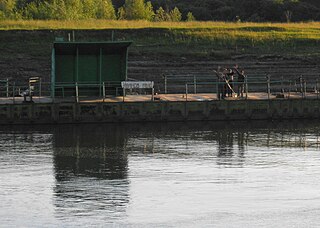 Tevrizsky District is an administrative and municipal district (raion), one of the thirty-two in Omsk Oblast, Russia. It is located in the north of the oblast. The area of the district is 9,800 square kilometers (3,800 sq mi). Its administrative center is the urban locality of Tevriz. Population: 15,485 ; 18,090 (2002 Census) ; 20,249 (1989 Soviet census) . The population of Tevriz accounts for 45.1% of the district's total population.  Ust-Ishimsky District is an administrative and municipal district (raion), one of the thirty-two in Omsk Oblast, Russia. It is located in the northwest of the oblast. The area of the district is 7,846 square kilometers (3,029 sq mi).} Its administrative center is the rural locality of Ust-Ishim, which, as its name indicates, is located at the confluence of the Ishim River with the Irtysh.  Znamensky District is an administrative and municipal district (raion), one of the thirty-two in Omsk Oblast, Russia. It is located in the north of the oblast. The area of the district is 3,700 square kilometers (1,400 sq mi). Its administrative center is the rural locality of Znamenskoye. Population: 12,427 ; 13,876 (2002 Census) ; 15,046 (1989 Soviet census) . The population of Znamenskoye accounts for 42.6% of the district's total population.  Abatsky District is an administrative district (raion), one of the twenty-two in Tyumen Oblast, Russia. As a municipal division, it is incorporated as Abatsky Municipal District . It is located in the southeast of the oblast. The area of the district is 4,080 square kilometers (1,580 sq mi). Its administrative center is the rural locality of Abatskoye. Population: 19,837 ; 23,566 (2002 Census) ; 26,453 (1989 Soviet census) . The population of Abatskoye accounts for 40.1% of the district's total population.  Azovo is a rural locality and the administrative center of Azovsky Nemetsky National District of Omsk Oblast, Russia. Population: 5,997 (2010 Russian census) ; 5,376 (2002 Census) ;  Ust-Ishim is a rural locality and the administrative center of Ust-Ishimsky District, Omsk Oblast, Russia. Population: 4,802 (2010 Russian census) ; 5,060 (2002 Census) ; 5,795 (1989 Soviet census) . - ↑ Президент Российской Федерации. Указ №849 от 13 мая 2000 г. «О полномочном представителе Президента Российской Федерации в федеральном округе». Вступил в силу 13 мая 2000 г. Опубликован: "Собрание законодательства РФ", No. 20, ст. 2112, 15 мая 2000 г. (President of the Russian Federation. Decree # 849 of May 13, 2000 On the Plenipotentiary Representative of the President of the Russian Federation in a Federal District . Effective as of May 13, 2000.).
- ↑ Госстандарт Российской Федерации. №ОК 024-95 27 декабря 1995 г. «Общероссийский классификатор экономических регионов. 2. Экономические районы», в ред. Изменения №5/2001 ОКЭР. ( Gosstandart of the Russian Federation. # OK 024-95 December 27, 1995 Russian Classification of Economic Regions. 2. Economic Regions , as amended by the Amendment # 5/2001 OKER. ).
- ↑ "Сведения о наличии и распределении земель в Российской Федерации на 01.01.2019 (в разрезе субъектов Российской Федерации)" . Federal Service for State Registration, Cadastre and Cartography . Archived from the original on 9 February 2022 . Retrieved 29 August 2023 .
- ↑ "Оценка численности постоянного населения по субъектам Российской Федерации" . Federal State Statistics Service . Retrieved 1 September 2022 .
- ↑ "26. Численность постоянного населения Российской Федерации по муниципальным образованиям на 1 января 2018 года" . Federal State Statistics Service . Retrieved 23 January 2019 .
- ↑ "Об исчислении времени" . Официальный интернет-портал правовой информации (in Russian). 3 June 2011 . Retrieved 19 January 2019 .
- ↑ Official throughout the Russian Federation according to Article 68.1 of the Constitution of Russia .
- 1 2 3 Russian Federal State Statistics Service (2011). Всероссийская перепись населения 2010 года. Том 1 [ 2010 All-Russian Population Census, vol. 1 ] . Всероссийская перепись населения 2010 года [2010 All-Russia Population Census] (in Russian). Federal State Statistics Service .
- ↑ Ишимская степь ; Great Soviet Encyclopedia in 30 vols. — Ch. ed. A.M. Prokhorov . - 3rd ed. - M. Soviet Encyclopedia, 1969-1978. (in Russian)
- ↑ "История Омской области" . Omskobl.ru. Archived from the original on 22 November 2012 . Retrieved 13 August 2012 .
- ↑ "Newsline - May 20, 1996 Yeltsin Promises to Maintain Stability, Plays Regional Card" . Radio Free Europe/Radio Liberty . 20 May 1996 . Retrieved 2 May 2019 .
- ↑ Chuman, Mizuki. "The Rise and Fall of Power-Sharing Treaties Between Center and Regions in Post-Soviet Russia" (PDF) . Demokratizatsiya : 146. Archived (PDF) from the original on 9 October 2022.
- ↑ "Список общественных объединений, имеющих право участвовать в выборах - Управление Министерства юстиции Российской Федерации по Омской области" [ List of public associations eligible to participate in elections - Office of the Ministry of Justice of the Russian Federation for the Omsk Region ] . to55.minjust.ru . Retrieved 11 March 2019 .
- ↑ Отчёт о работе администрации города Омска в 2005—2009 годах
- ↑ "Журнал "Forbes" - 30 лучших городов для бизнеса — 2010" (in Russian). 27 May 2010 . Retrieved 30 March 2011 .
- ↑ Галина Балашенко «Заниматься бизнесом станет проще» // «Домашняя газета» № 22 (065), 9 июня 2010 года
- ↑ Russian Regional Economic and Business Atlas Volume 2: Strategic Investment and Business Information ISBN 978-1-577-51030-7 p. 131
- ↑ Russian Federal State Statistics Service. Всероссийская перепись населения 2020 года. Том 1 [ 2020 All-Russian Population Census, vol. 1 ] (XLS) (in Russian). Federal State Statistics Service .
- ↑ Federal State Statistics Service (21 May 2004). Численность населения России, субъектов Российской Федерации в составе федеральных округов, районов, городских поселений, сельских населённых пунктов – районных центров и сельских населённых пунктов с населением 3 тысячи и более человек [ Population of Russia, Its Federal Districts, Federal Subjects, Districts, Urban Localities, Rural Localities—Administrative Centers, and Rural Localities with Population of Over 3,000 ] (XLS) . Всероссийская перепись населения 2002 года [All-Russia Population Census of 2002] (in Russian).
- ↑ Всесоюзная перепись населения 1989 г. Численность наличного населения союзных и автономных республик, автономных областей и округов, краёв, областей, районов, городских поселений и сёл-райцентров [ All Union Population Census of 1989: Present Population of Union and Autonomous Republics, Autonomous Oblasts and Okrugs, Krais, Oblasts, Districts, Urban Settlements, and Villages Serving as District Administrative Centers ] . Всесоюзная перепись населения 1989 года [All-Union Population Census of 1989] (in Russian). Институт демографии Национального исследовательского университета: Высшая школа экономики [Institute of Demography at the National Research University: Higher School of Economics]. 1989 – via Demoscope Weekly .
- ↑ "Information on the number of registered births, deaths, marriages and divorces for January to December 2022" . ROSSTAT . Archived from the original on 2 March 2023 . Retrieved 21 February 2023 .
- ↑ "Birth rate, mortality rate, natural increase, marriage rate, divorce rate for January to December 2022" . ROSSTAT . Archived from the original on 2 March 2023 . Retrieved 21 February 2023 .
- ↑ Суммарный коэффициент рождаемости [ Total fertility rate ] . Russian Federal State Statistics Service (in Russian). Archived from the original (XLSX) on 10 August 2023 . Retrieved 10 August 2023 .
- ↑ "Демографический ежегодник России" [ The Demographic Yearbook of Russia ] (in Russian). Federal State Statistics Service of Russia (Rosstat) . Retrieved 1 June 2022 .
- ↑ "Перепись-2010: русских становится больше" . Perepis-2010.ru. 19 December 2011. Archived from the original on 7 January 2019 . Retrieved 13 August 2012 .
- ↑ "Демография Омской области" . Demograf.omskmintrud.ru. Archived from the original on 19 February 2012 . Retrieved 13 August 2012 .
- ↑ "Демография Омской области" . Demograf.omskmintrud.ru. Archived from the original on 10 March 2012 . Retrieved 13 August 2012 .
- 1 2 3 "Arena: Atlas of Religions and Nationalities in Russia" . Sreda, 2012.
- ↑ 2012 Arena Atlas Religion Maps . "Ogonek", № 34 (5243), 27 August 2012. Retrieved 21 April 2017. Archived .
- ↑ Hungary Russia sister city relationships
| |
|---|
| | | (48) | |
|---|
| (24) | |
|---|
| (9) | |
|---|
| (4) | |
|---|
| (3) | |
|---|
| (1) | |
|---|
| Considered by most of the international community to be part of . Administratively subordinated to . Administratively subordinated to . |
| |
|---|
| : • | | Districts | |
|---|
| Cities and towns | |
|---|
| | |
|---|
 Other destinations- 55.3233 73.07655 1 Chernoluchye/Krasnoyarka recreation area
 Expect that some knowledge of Russian will greatly assist you in your travels here. Omsk is a major stop (and indeed, one of the best stops) on the Trans-Siberian Railway . This capital city is also the "terminus" for the Trans-Siberian Railway's South Ural branch. Omsk Tsentralny Airport ( OMS IATA ), serviced by flights from Moscow , Saint Petersburg , Krasnoyarsk , and Andijan , Uzbekistan . - Cruising, whitewater rafting, and canoeing along the Irtysh, Tara, and Shish rivers
The next major stops on the Trans-Siberian Railway are Tyumen to the west and Novosibirsk to the east. The first major stop to the west along the South Ural Branch of the Trans-Siberian Railway is Petropavlovsk , Kazakhstan . | This travel guide to is an and may need more content. It has a , but there is not enough present. If there are and listed, they may not all be at status or there may not be a and a "Get in" section describing all of the typical ways to get here. Please and ! |  - Has custom banner
- Has mapframe
- Has map markers
- Has Geo parameter
- Western Siberia
- All destination articles
- Outline regions
- Outline articles
- Region articles
- Bottom-level regions
- Pages using the Kartographer extension
Navigation menu |
IMAGES
VIDEO
COMMENTS
The Importance Of Hygiene In A Salon
Hygiene = Professionalism. Personal hygiene is also very important in a salon because bad hygiene can put clients off from returning to your services even if they are impressed with the treatments you have given them. Body odor is one of the main concerns in personal hygiene in a salon, when you are performing treatments on a client as you are ...
It is the gold standard for sterilization in nail salons. The autoclave heats tools to a high temperature (usually between 250 F or 121°C and 276 F or 134°C) for a specific period, effectively killing all microorganisms. Metal tools like nail clippers, cuticle nippers, and metal pushers are ideal candidates for autoclave sterilization.
Personal presentation in the beauty industry is crucial for salon staff. Whether it's at a hairdresser, spa, wellness centre or elsewhere, people come to salons to look good and feel their best. ... Personal hygiene. Your personal hygiene is an extremely important aspect of your presentation. As you're working in close quarters with your ...
Personal presentation, hygiene, and conduct in the salon should be carried out with strict hygiene protocols in mind. Each member of staff should be fully trained in the importance of personal hygiene in a salon so they know how to properly conduct themself in a way that minimises the chance of cross-contamination. This includes:
Salon Hygiene & Sanitation In the bustling world of beauty and personal care, hygiene takes center stage. Welcome to our comprehensive guide on Salon Hygiene Tips and Good Practices. This article is a treasure trove of information for salon owners, employees, and customers alike, emphasizing the importance of maintaining a clean and safe environment in… Continue reading Hair, Nail Salon ...
It is very important to make sure that your personal presentation and hygiene is at the highest standard when working within a salon. Personal presentation as a hairdresser or beautician is very important as it is the first impression a client gets of you. If they don't like the look of you, it is unlikely that they are going to feel ...
Maintaining a high standard of hygiene in your salon is essential for protecting you, your clients and the public. A clean, sterile and safe space will encourage trust, encourage ongoing business and ensure issues such as cross-contamination, bacteria, and viruses are avoided. You and your employees should always be educated on standard hygiene ...
19th September 2016. In an industry built upon making people look and feel good, it is very important that you as a salon owner guide your staff to maintain a presentable client facing appearance whilst taking care of the overall upkeep and aesthetics of your salon. How your salon and staff are perceived is extremely important and will ...
This series of activities include both personal and public hygiene. Creating a hygienic environment in the salon has a direct influence on the welfare of personnel as well as that of clients. To protect yourself, your clientele, and public health, you should educate yourself on standard hygiene practices that are to be enforced in a salon.
2. Personal Hygiene. Hand Hygiene: Encourage frequent hand washing and provide hand sanitizer stations throughout the salon for both clients and staff. Ensure that all staff members adhere to proper hand hygiene practices, including washing hands with soap and water for at least 20 seconds before and after each client interaction.
Secondly, poor personal hygiene can lead to the spread of bacteria and viruses - things like dirty nails and unwashed hands and clothes can harbor germs and viruses, which could potentially transfer to clients. ... Keeping on top of salon hygiene isn't tasking and is a serious practice to ensure that your salon and spa complies with the ...
Importance of personal presentation, hygiene, and conduct in maintaining health and safety in the salon. Personal presentation is important in ensuring health and safety in the workplace and it helps to know how to identify and deal with risks whether safety or health. Personal presentation values state that, you should know that your actions ...
It includes personal hygiene and public hygiene. Each is essential and has a direct bearing on your own welfare as well as your client's. To protect yourself, your clients and public health, you should know when, why and how to use sterilization and sanitation. A clean, safe, sterile salon and station will set you apart from much of the ...
Here are some reasons to consider your self-presentation as a professional: increases your ability to influence a customer. provides a representation of a brand or an organisation. increases the likelihood of building long-lasting relationships. encourages engagement from customers, which can improve sales.
The hygiene of a store or salon can be told by the cleanliness of the salon bathroom. Neeru adds, "At Play we maintain a checklist in these areas where the store manager checks it 4 times a day. The garbage is emptied in the night before we close. Pest control is the other solution from keeping the above in check.
hygiene practices which you must follow in the salon in order to avoid infection. We will describe the different equipment that we use to keep your professional tools clean. We will focus on both hygiene in the salon and personal hygiene. For personal hygiene, we will consider hygiene practices for hair, skin, clothes, hands and feet.
The importance of personal presentation, hygiene and conduct by shannon smith on Prezi. Blog. Aug. 21, 2024. Creating engaging teacher presentations: tips, ideas, and tools. Aug. 20, 2024. How to use AI in the classroom. July 25, 2024. Sales pitch presentation: creating impact with Prezi.
Why Is Personal Presentation Important In Maintaining Health And Safety In The Salon? when I go to college it is important that I present a Professional image. To show cleanliness both of your person and in the salon Health and safety in any business is imperative. Employees are
Contents: Cities and Settlements The population of all cities and urban settlements in Omsk Oblast according to census results and latest official estimates. The icon links to further information about a selected place including its population structure (gender).
In rooms with good sound insulation at Your disposal a comfortable double cast bed, personal hygiene products, Slippers, home appliances, large LCD TVs with digital channels, Hairdryers, in room of category "Suite" with air conditioning, 3D TV and Sony PlayStation 3. Clients receive without restriction and free access to Wi-Fi.
Omsk Oblast (Russian: О́мская о́бласть, romanized: Omskaya oblast' ) is a federal subject of Russia (an oblast), located in southwestern Siberia. The oblast has an area of 139,700 square kilometers (53,900 sq mi). Its population is 1,977,665 (2010 Census) with the majority, 1.12 million, living in O
Map of Omsk Oblast. 54.966667 73.383333 1 Omsk — One of Siberia 's most important cities and one of Russia 's largest, an excellent stop on the Trans-Siberian Railway. 56.875278 74.413611 2 Tara — one of Siberia's first cities in the 16th century and the "mother" to many of Siberia's most important cities as it was an expeditionary base; it ...